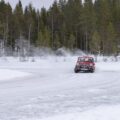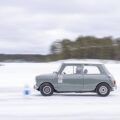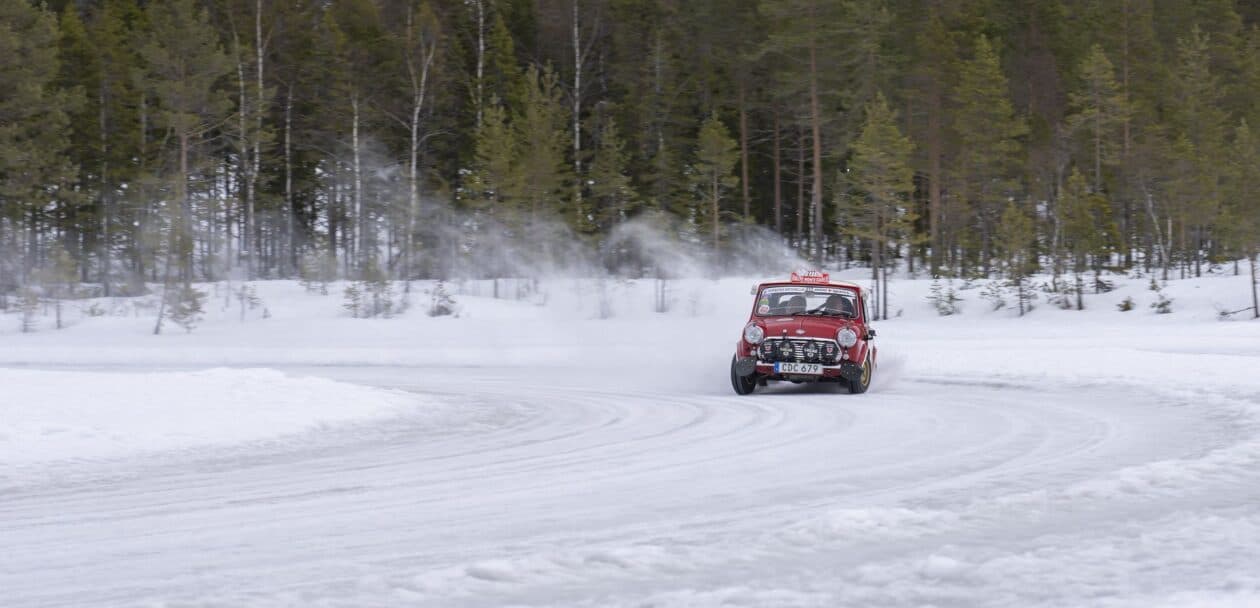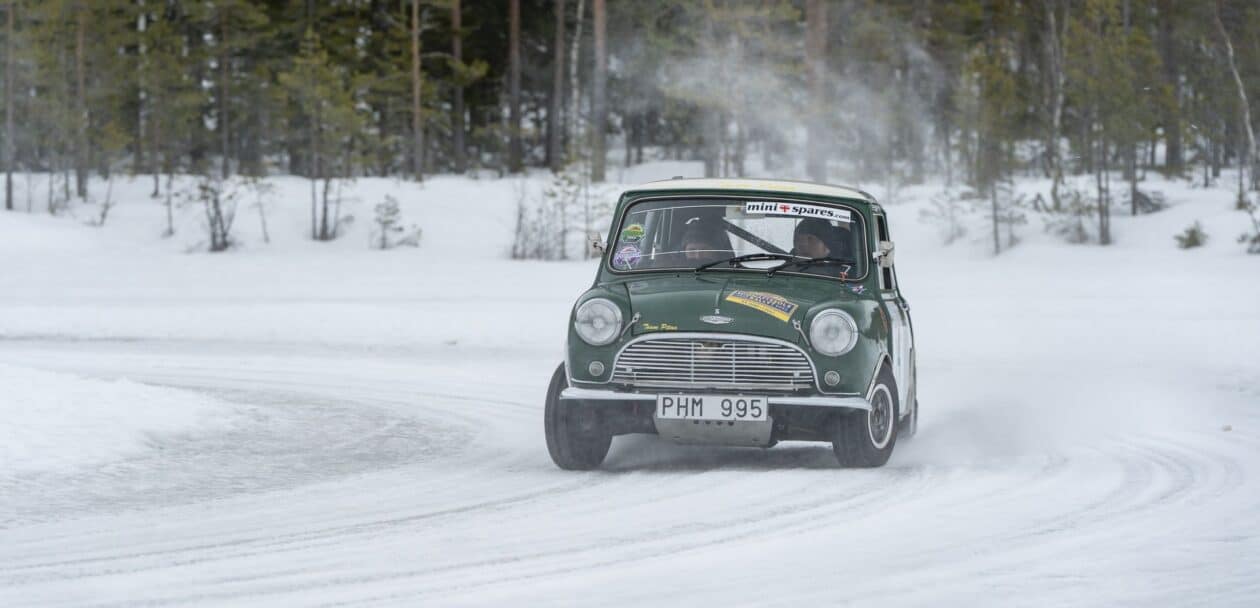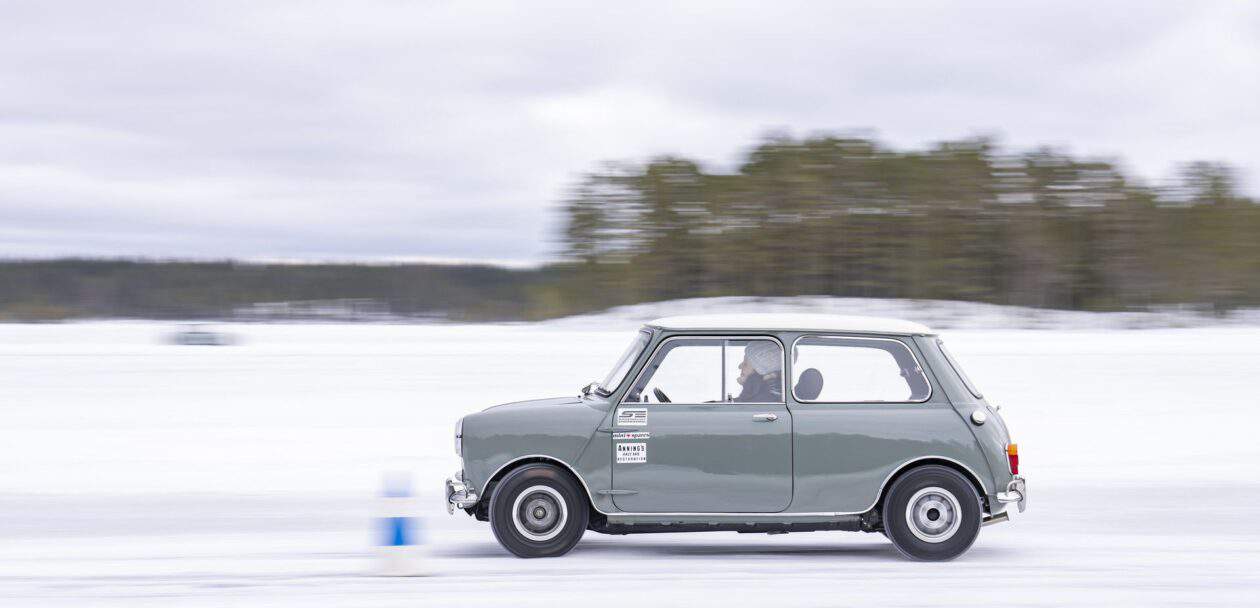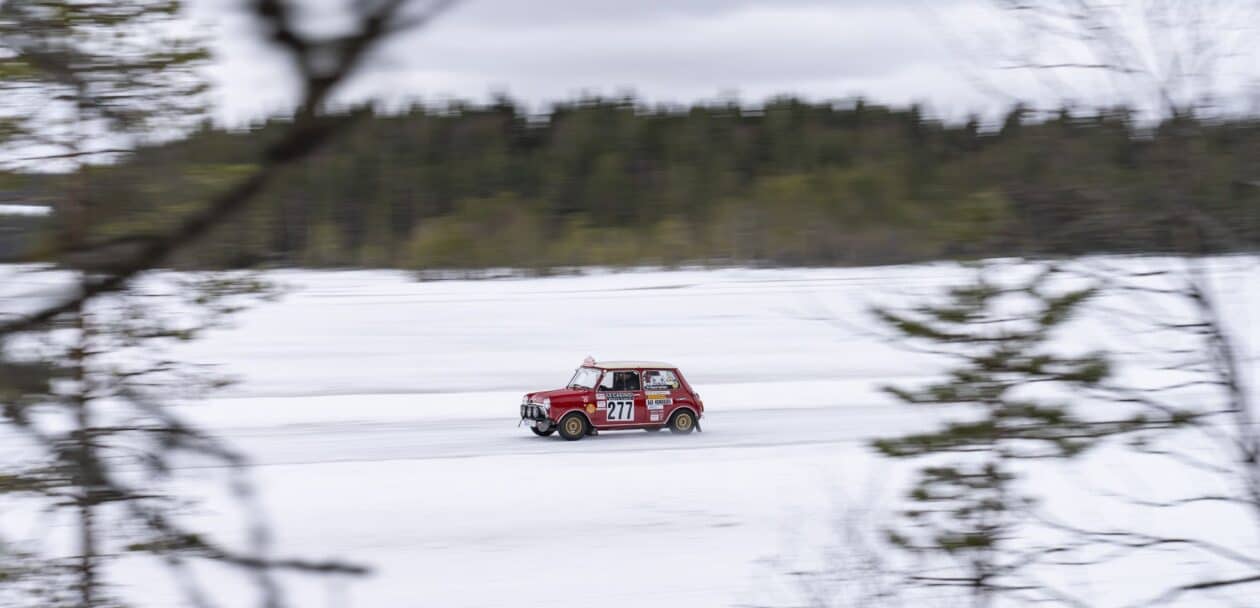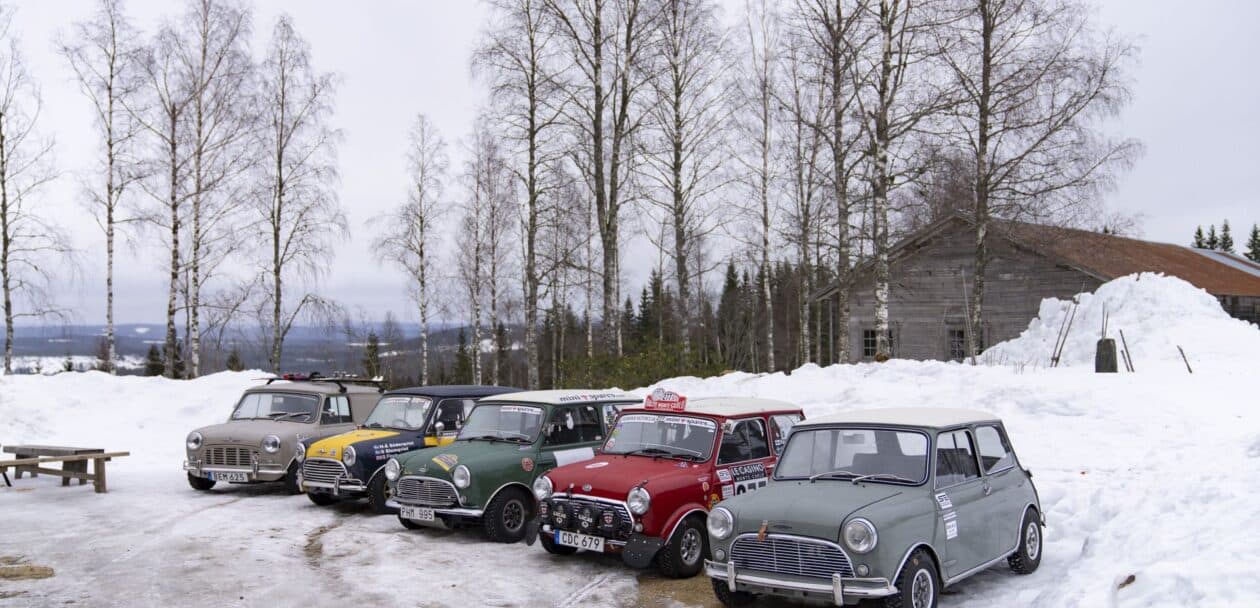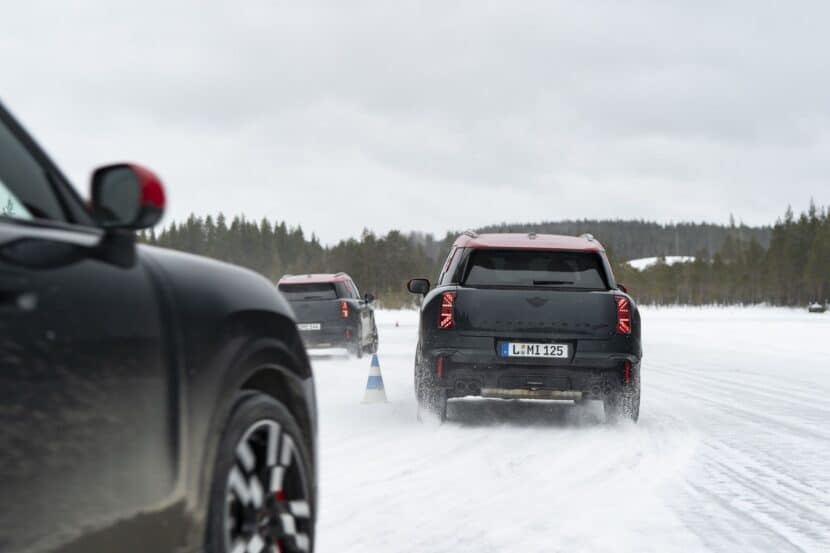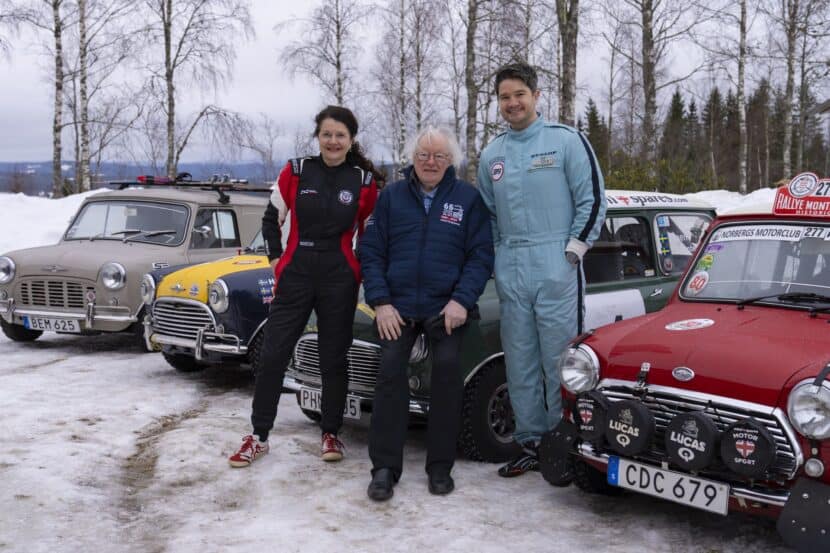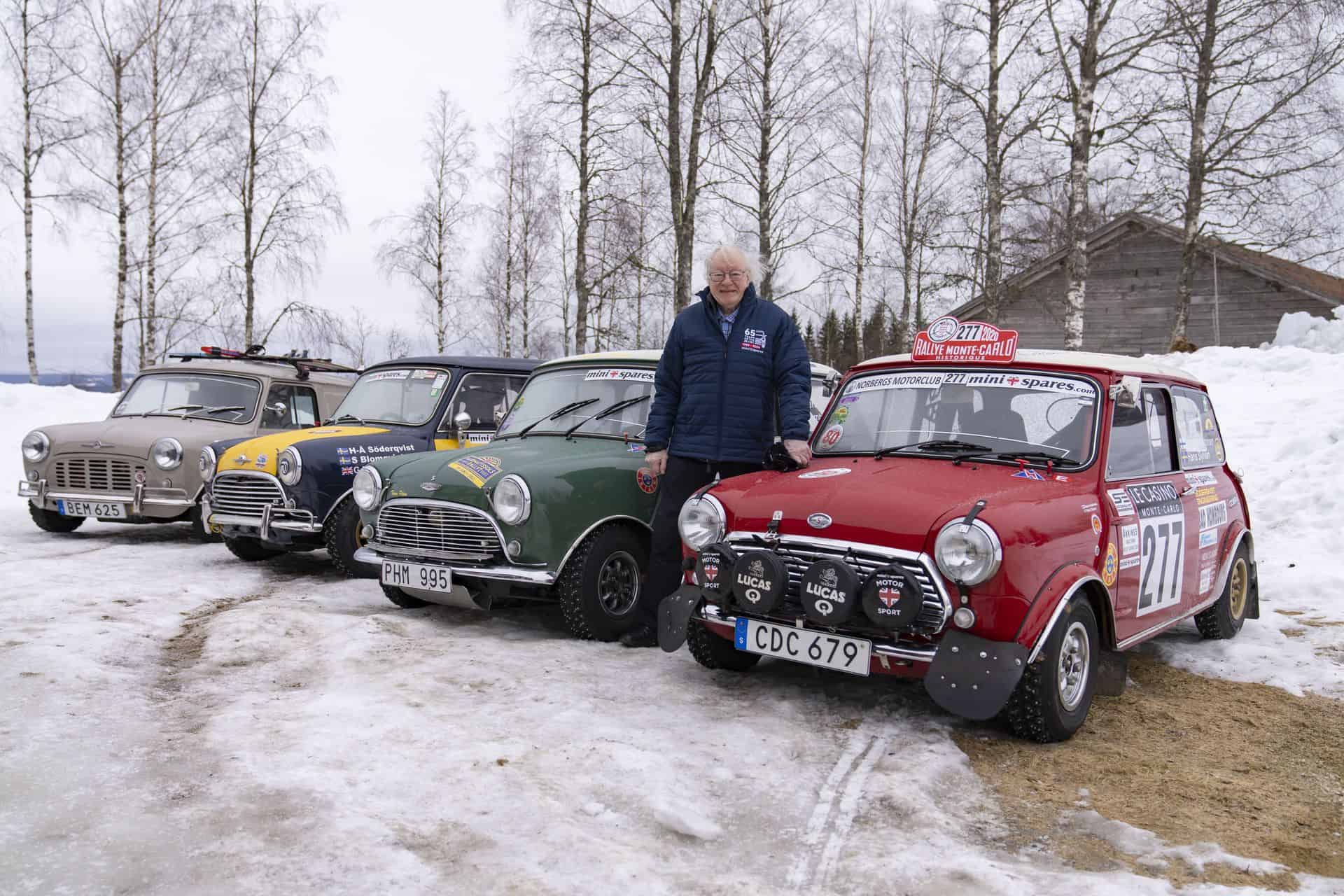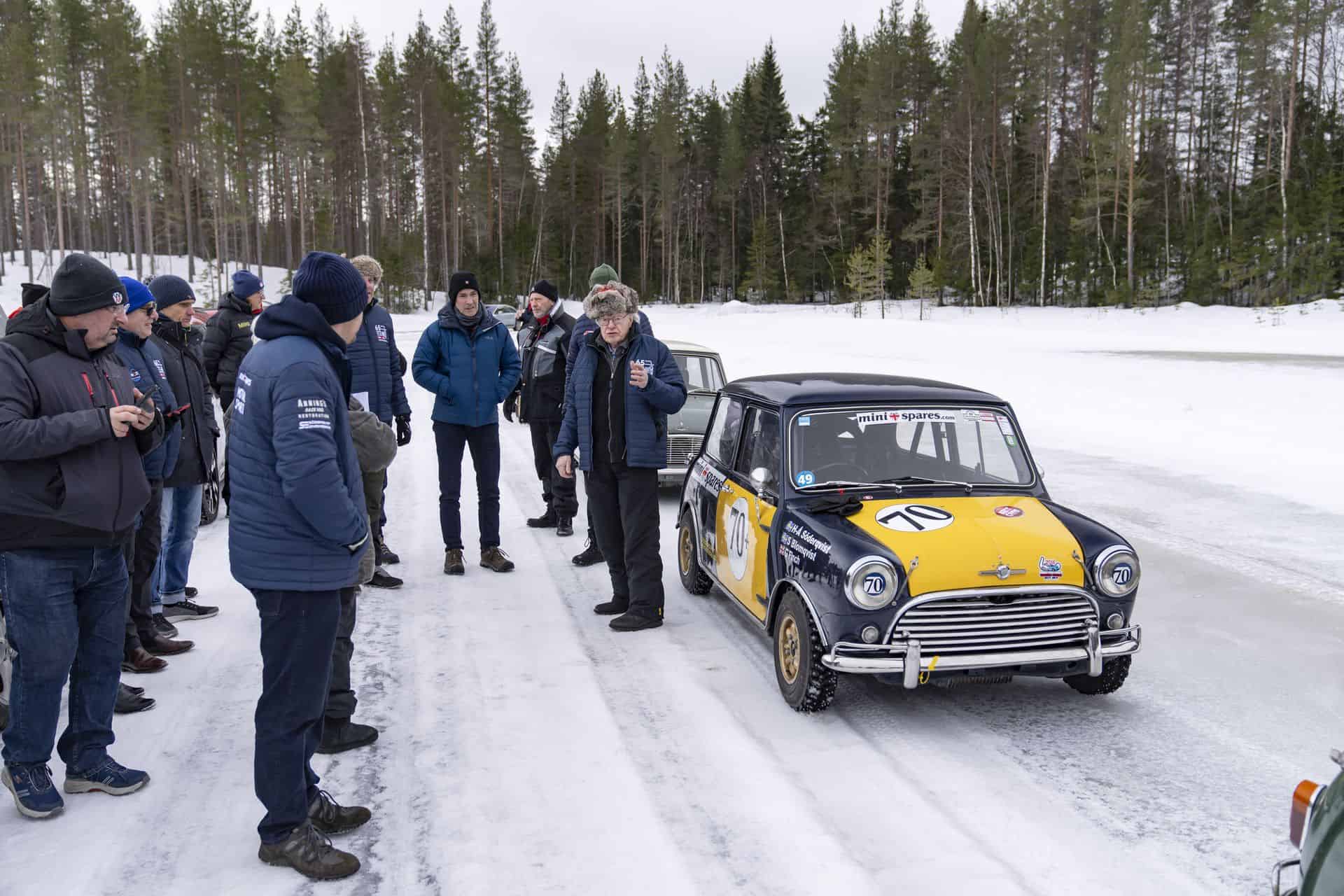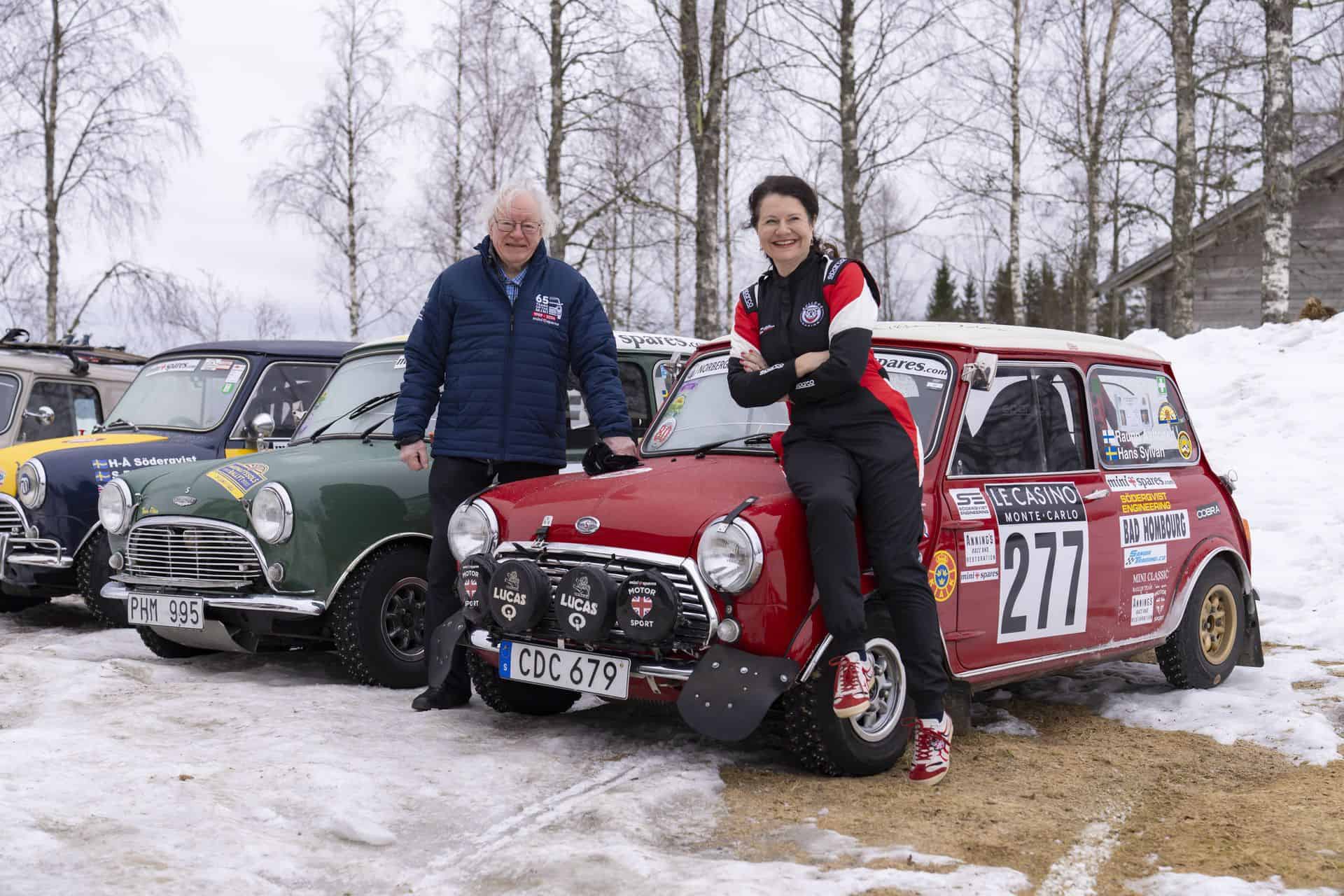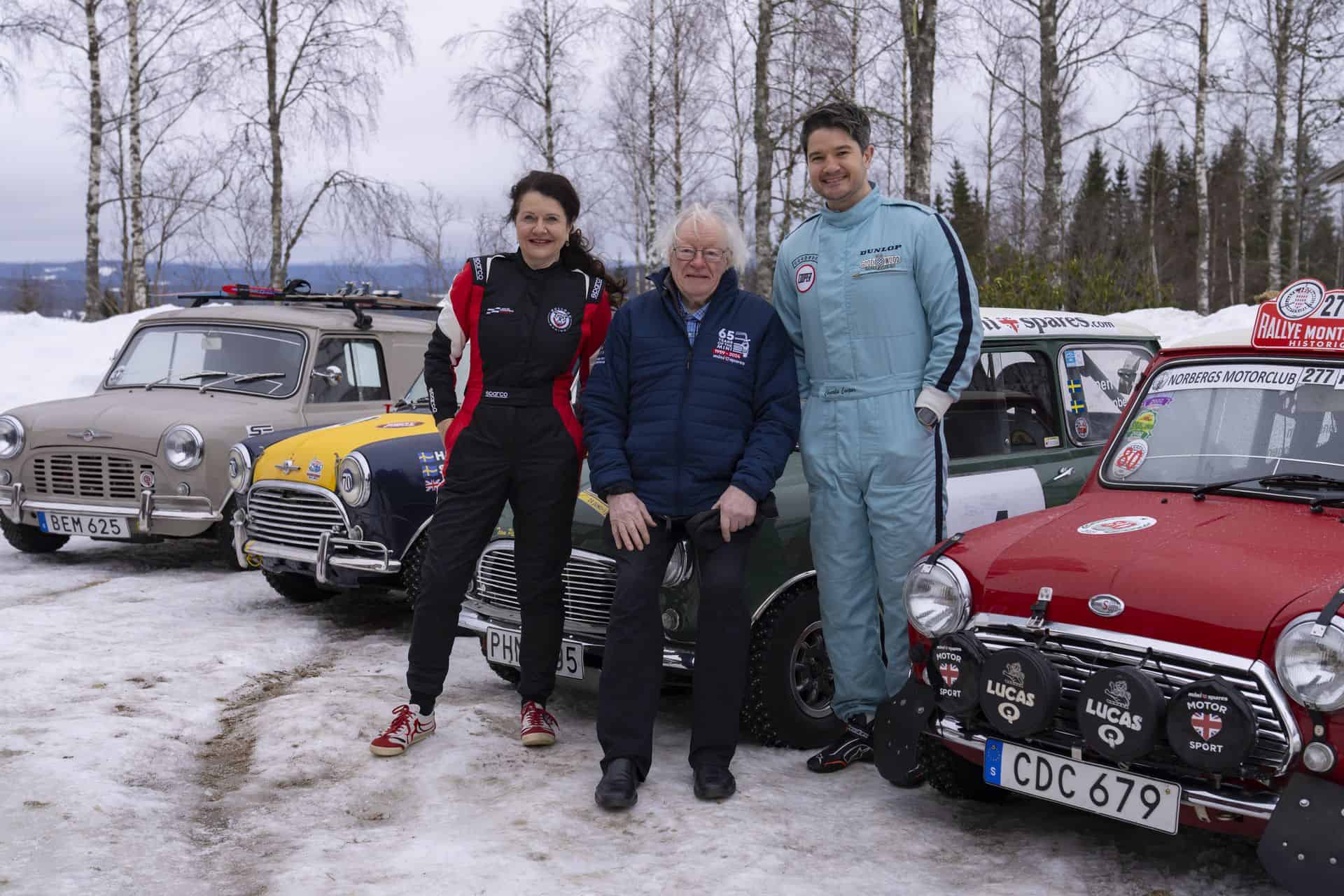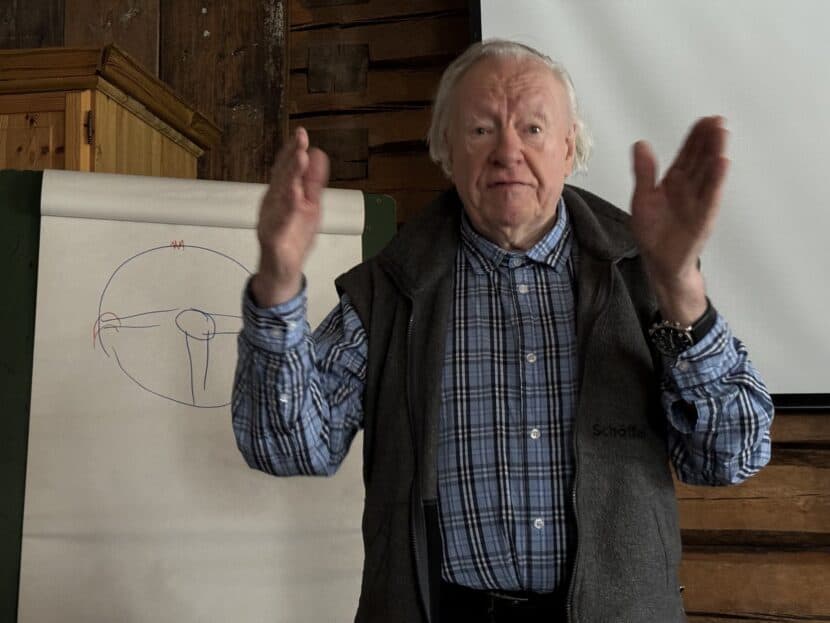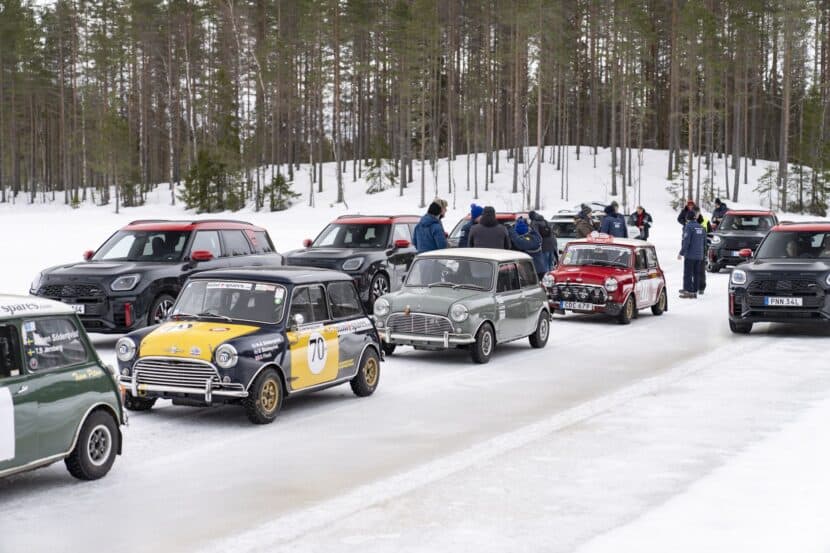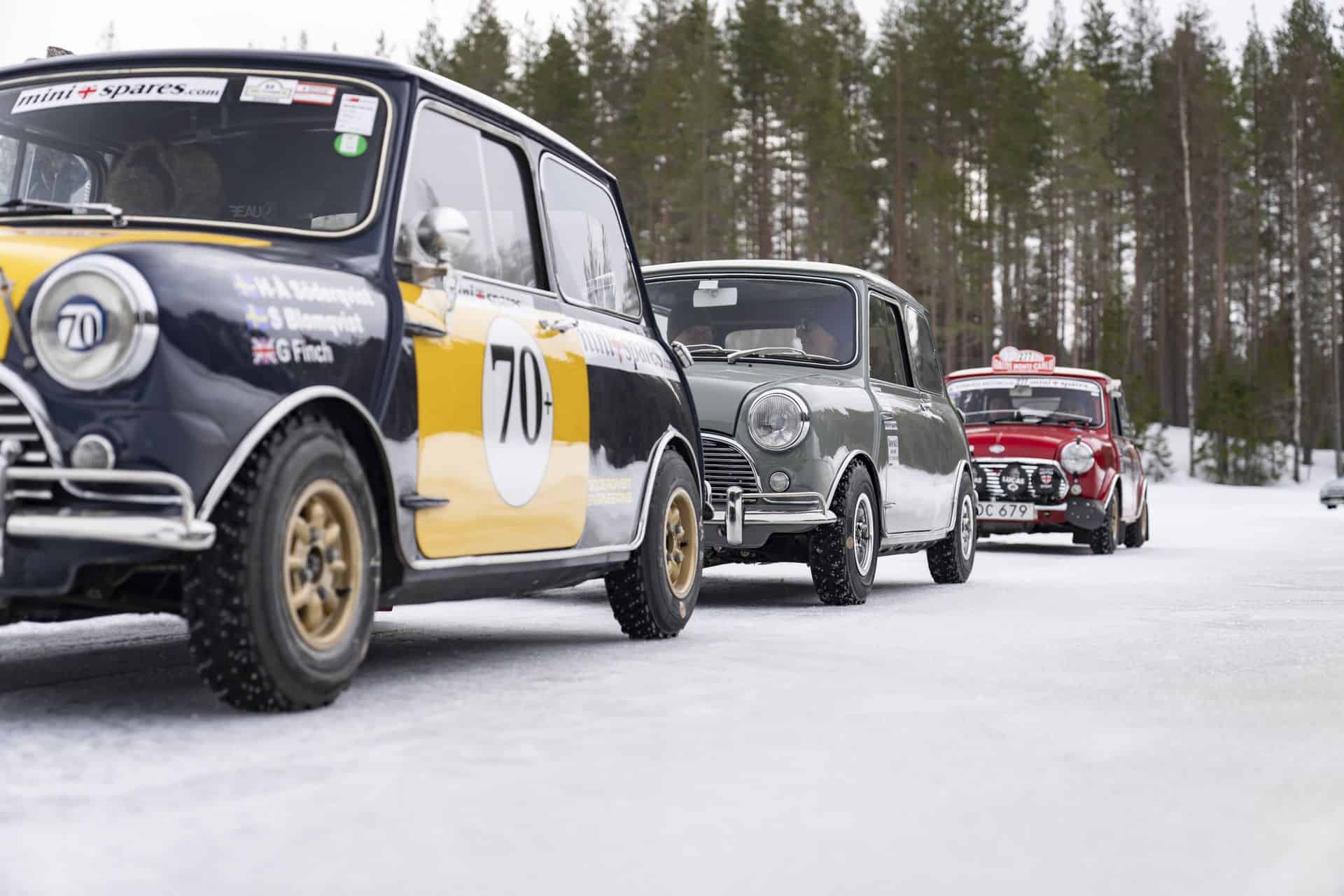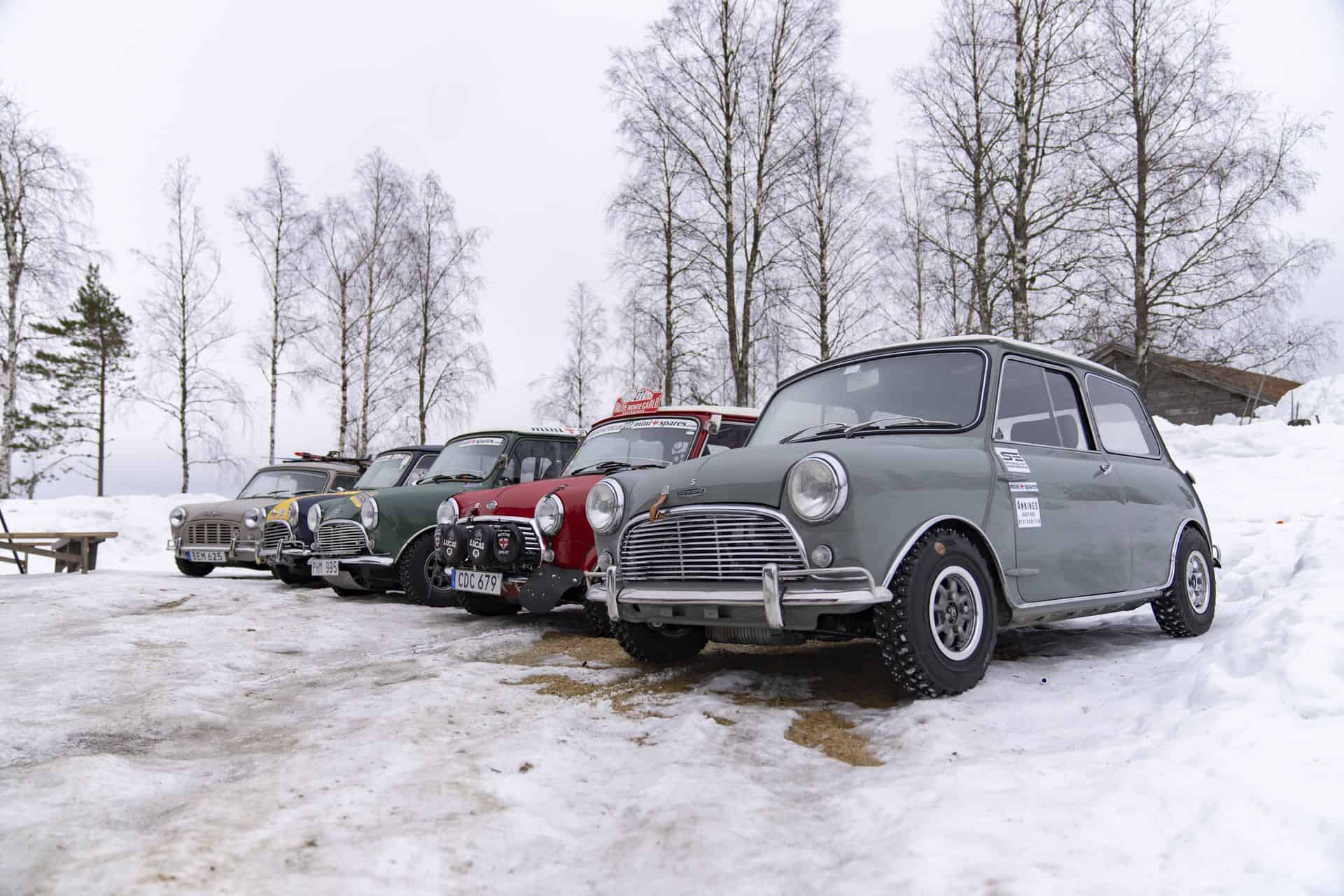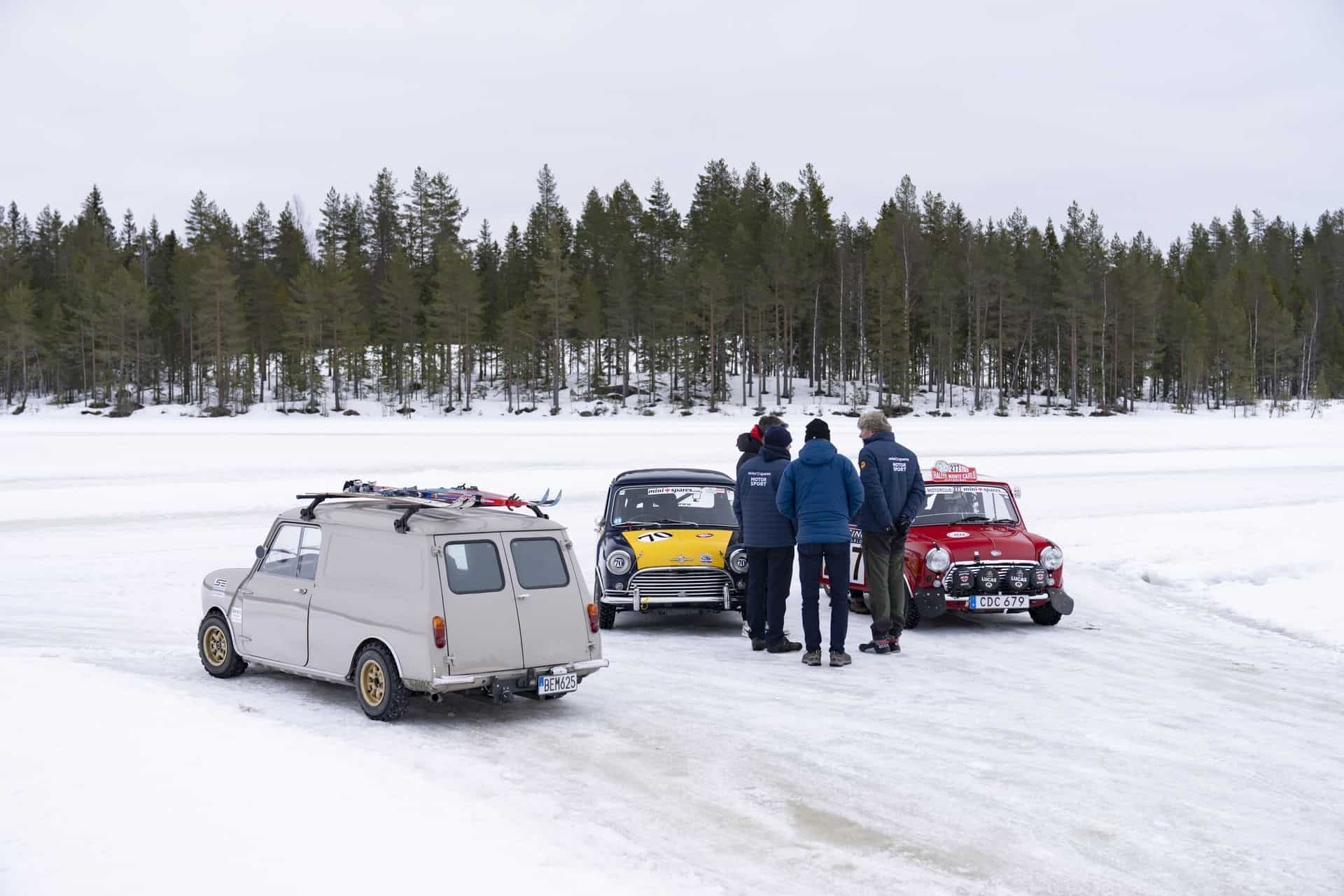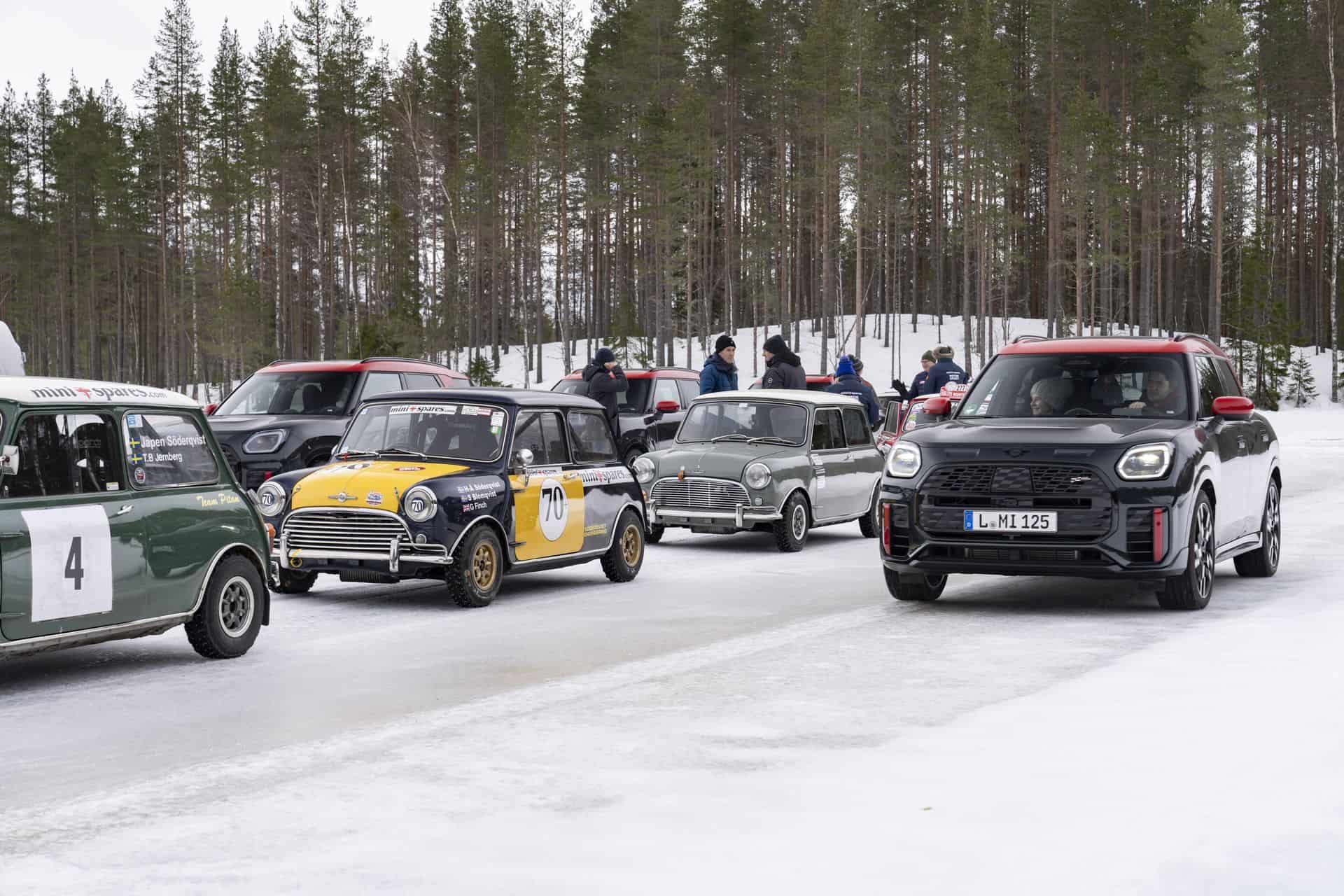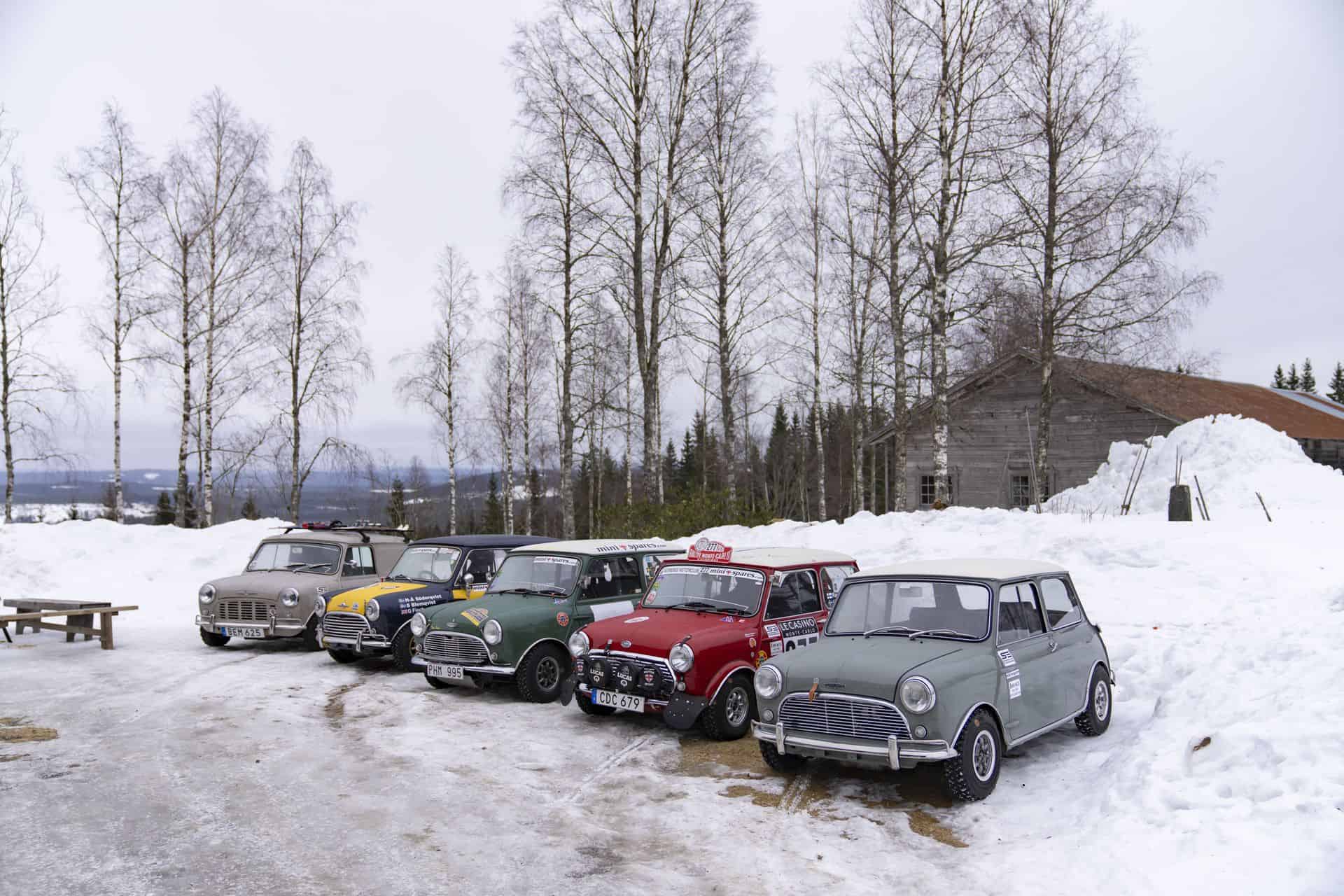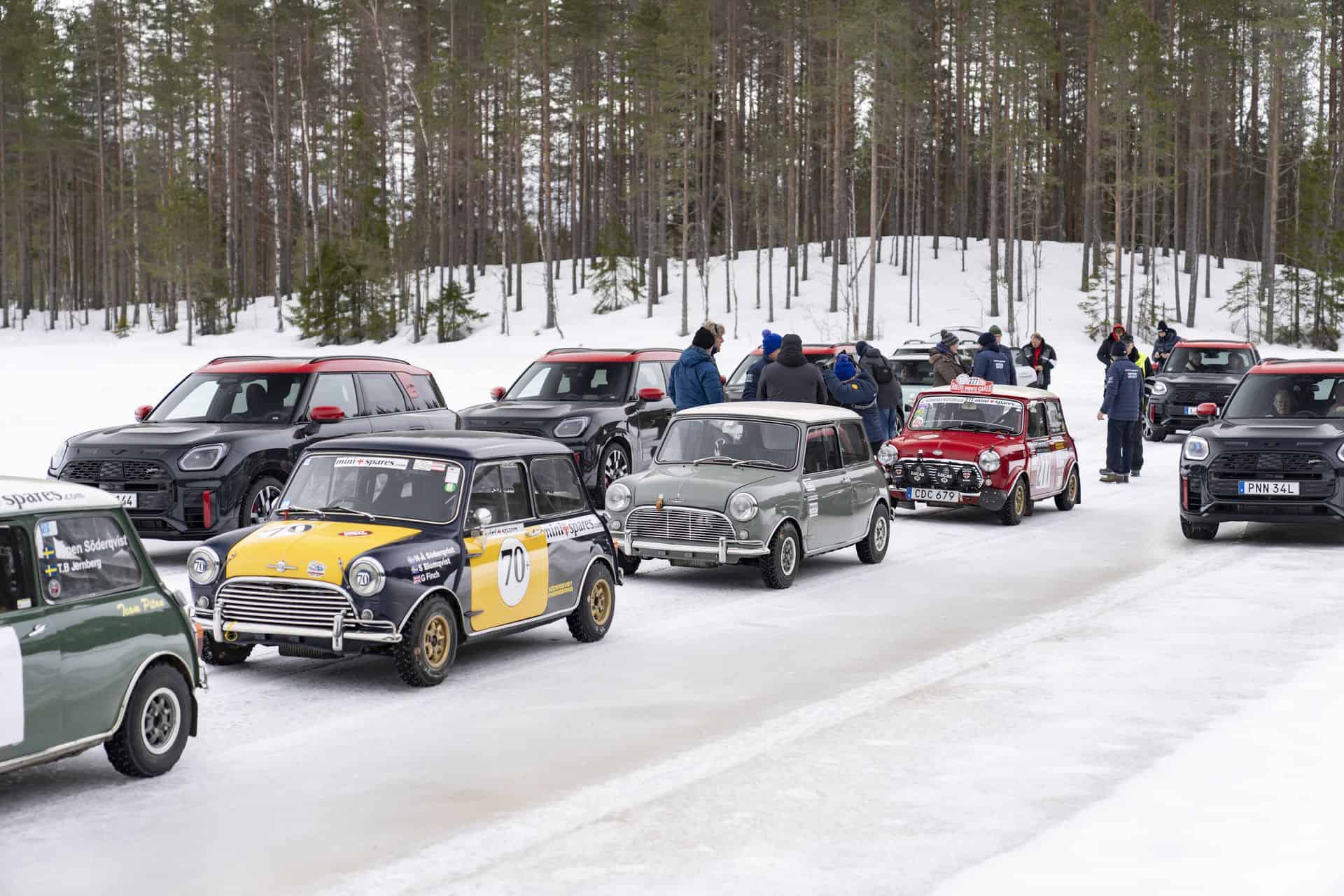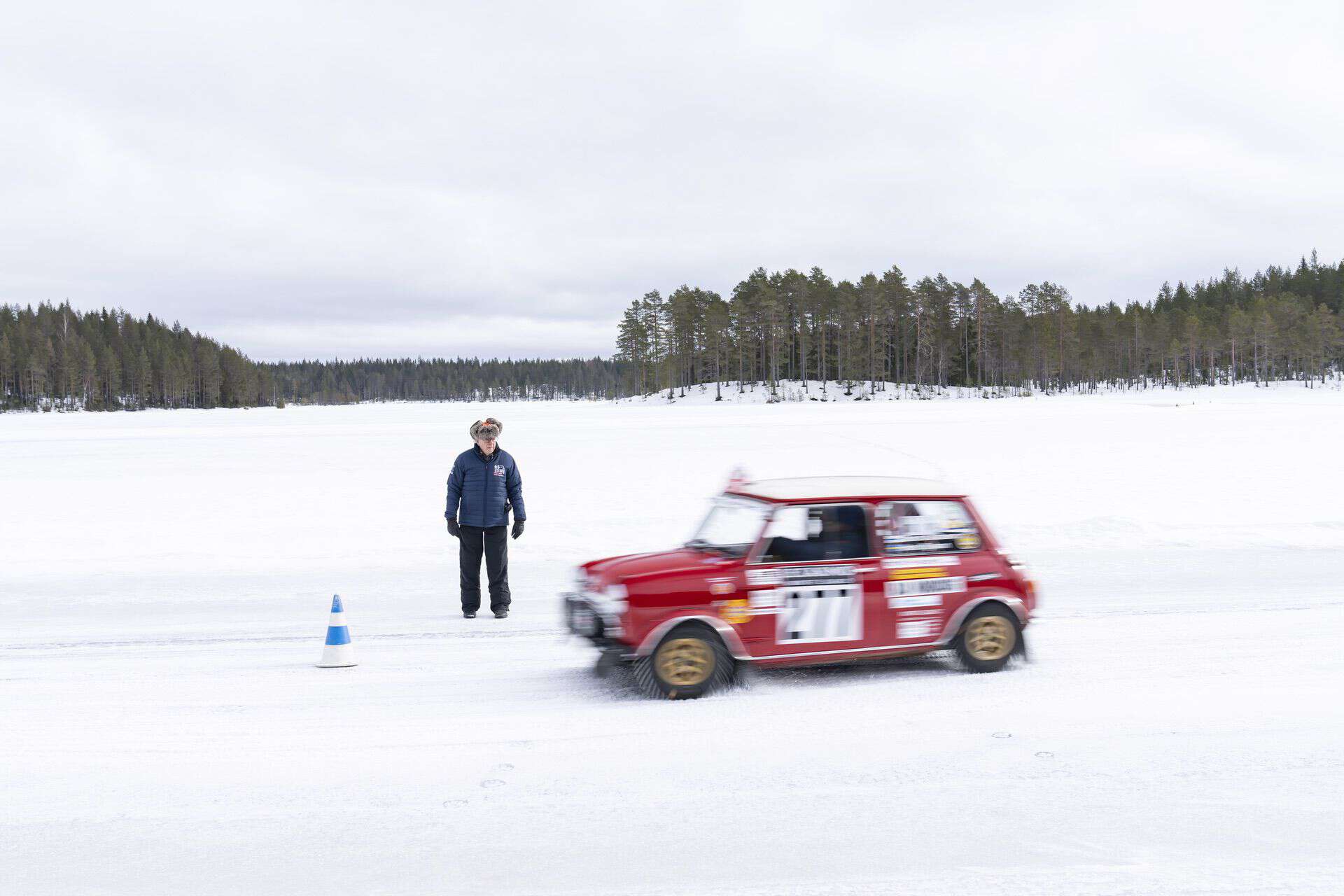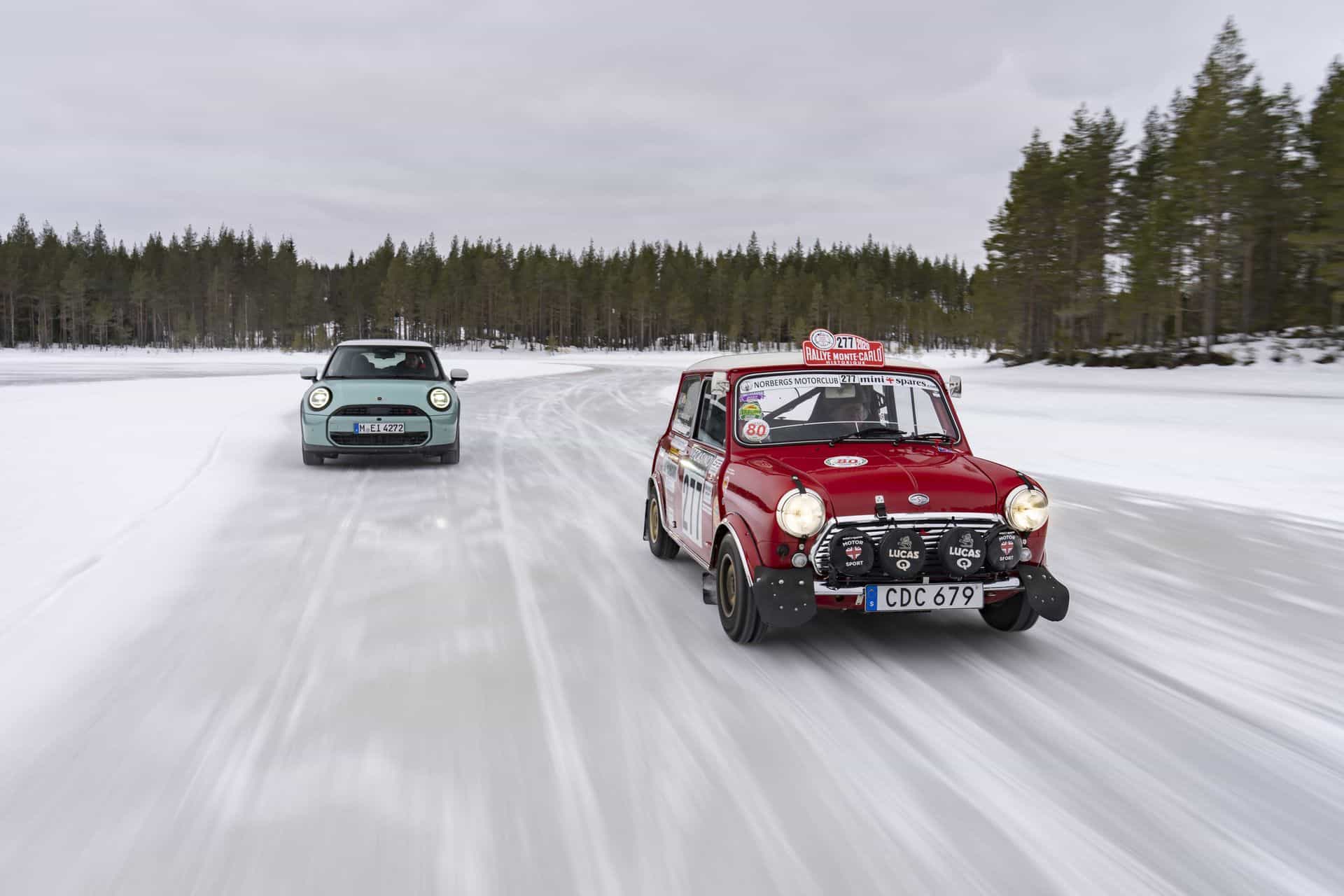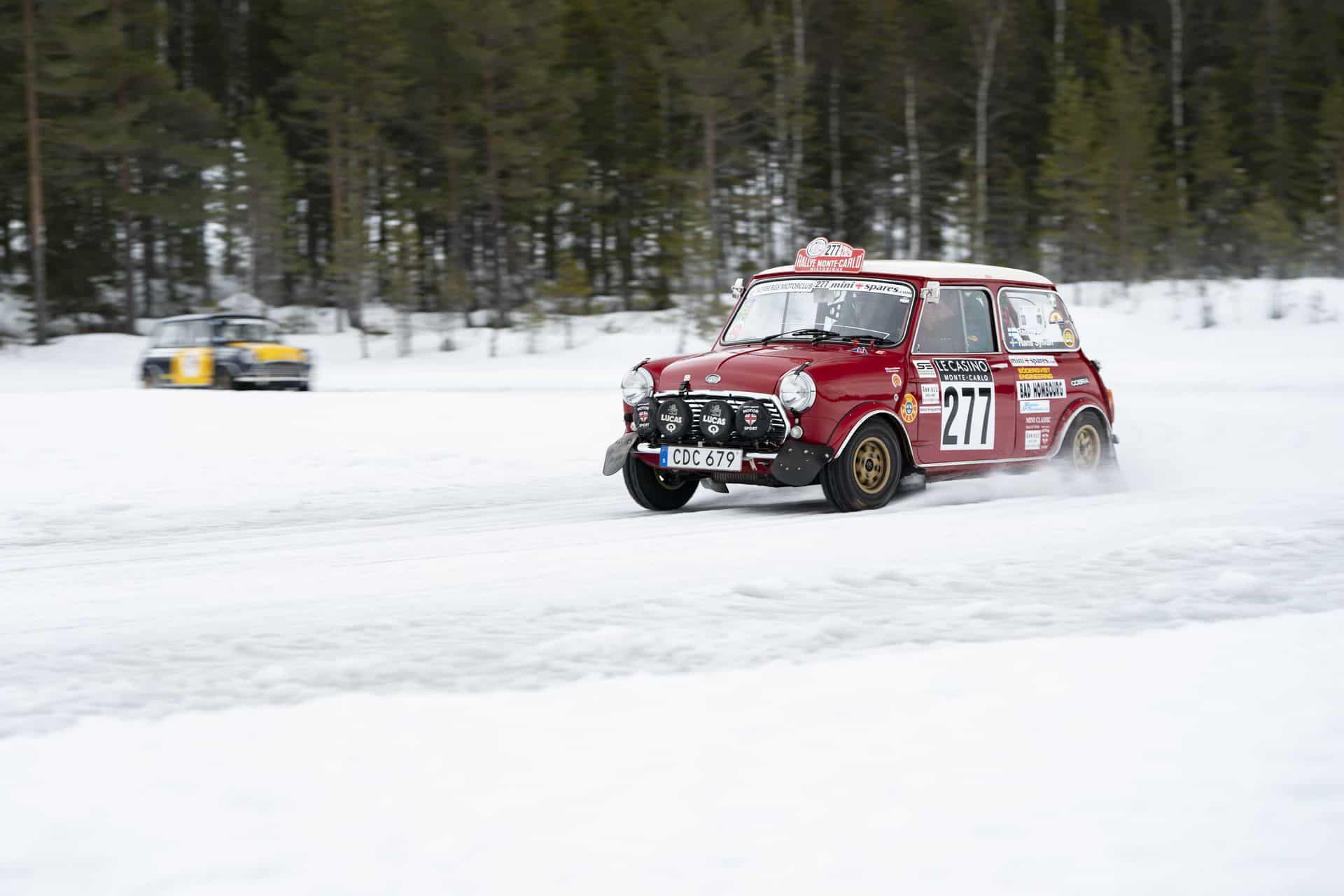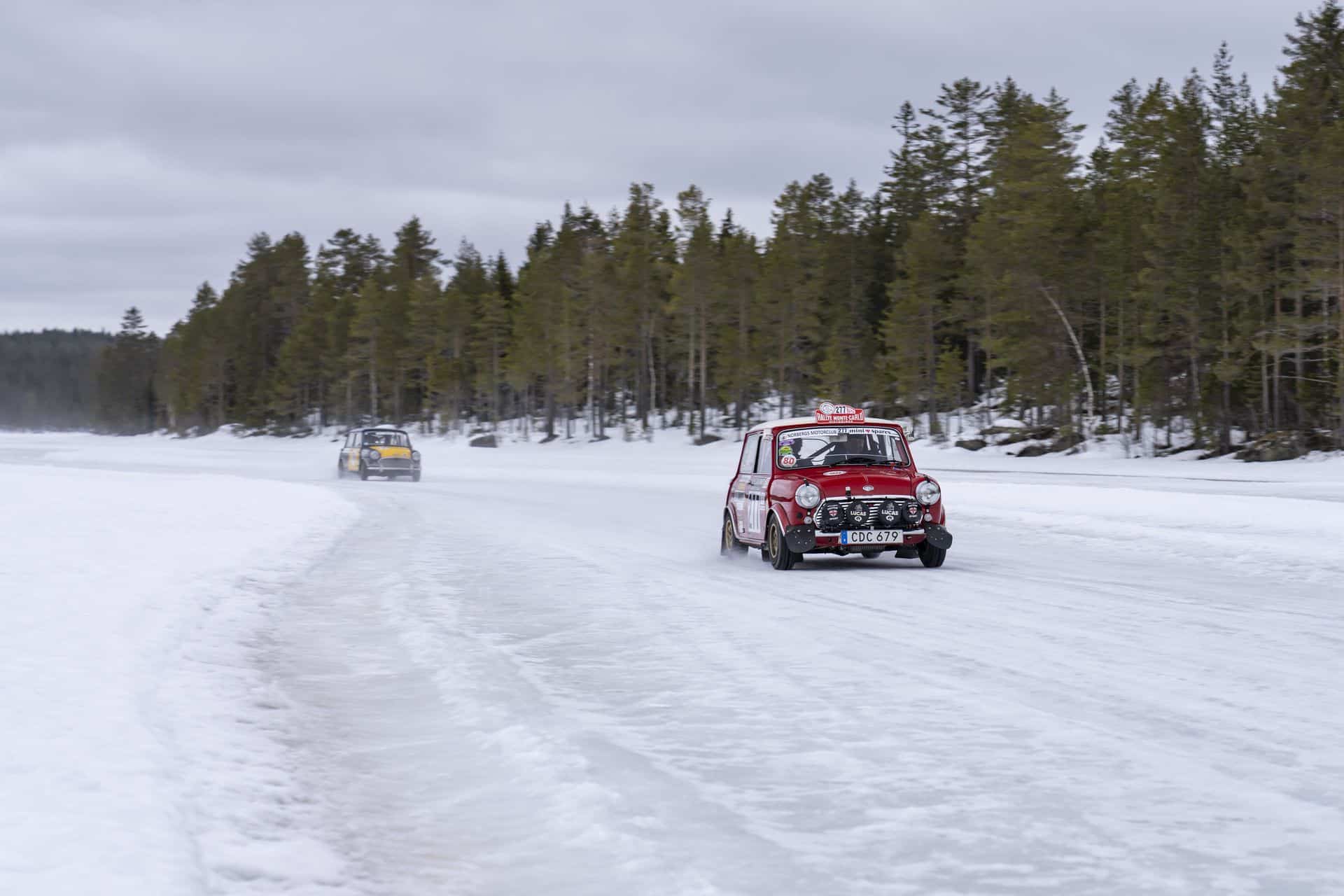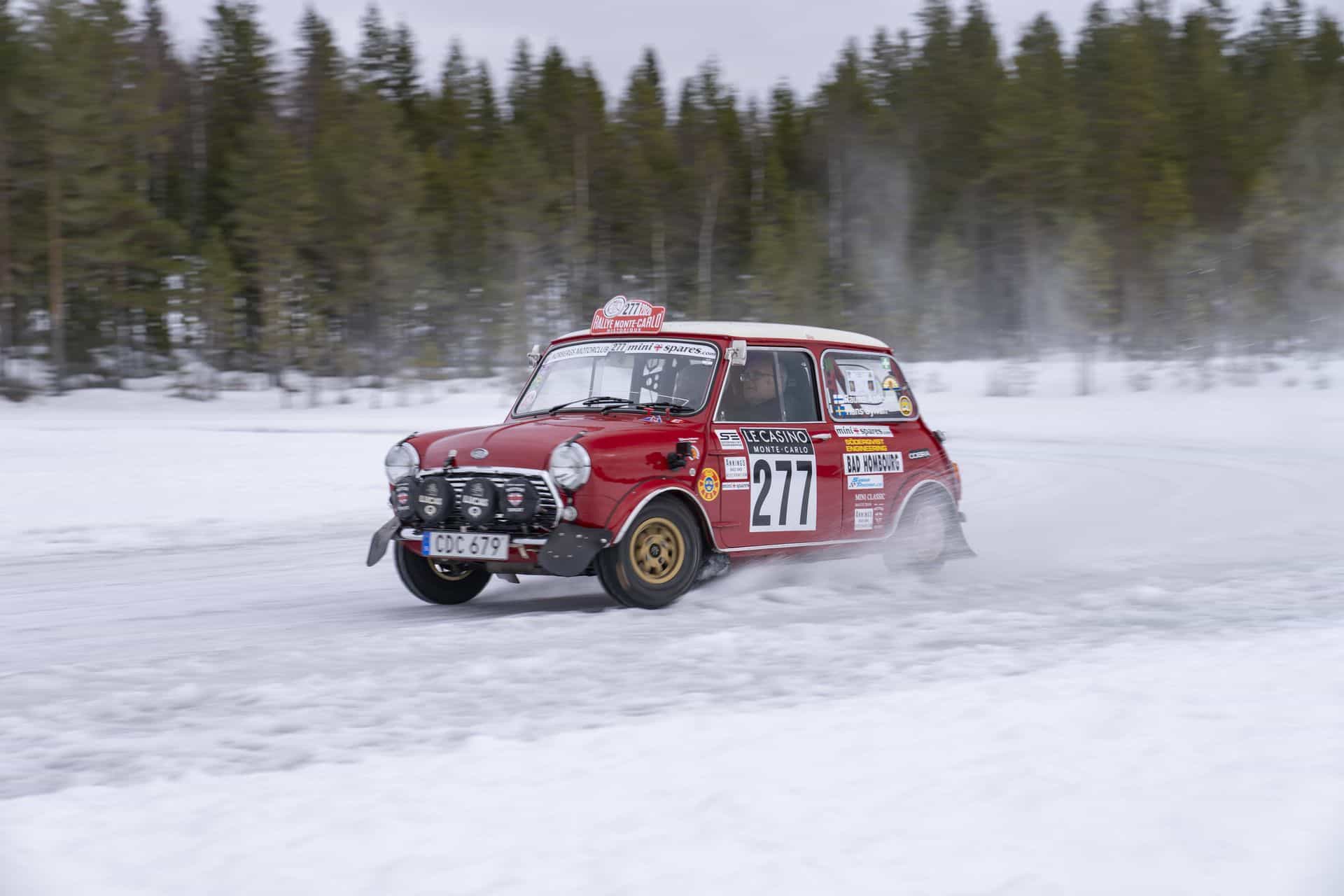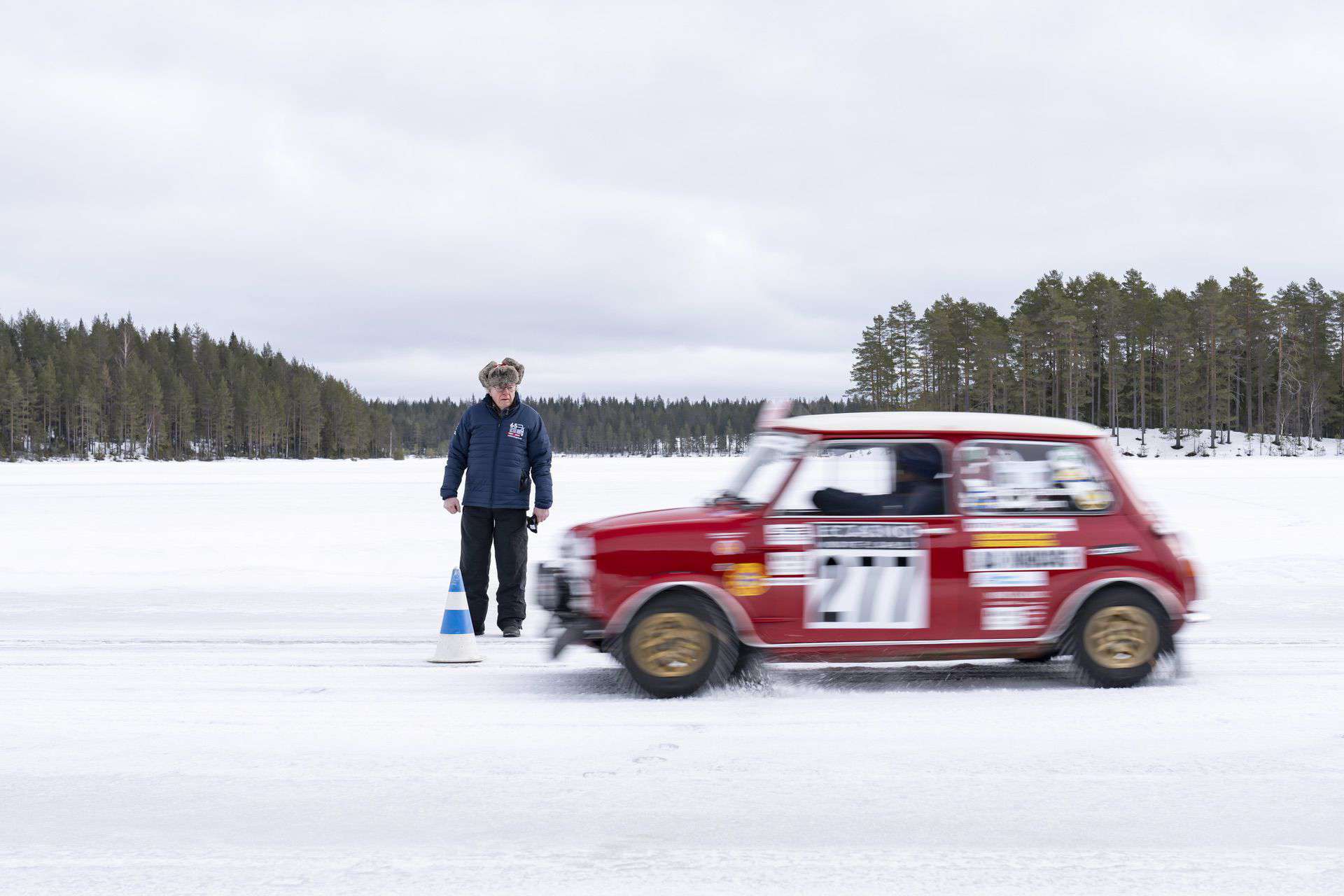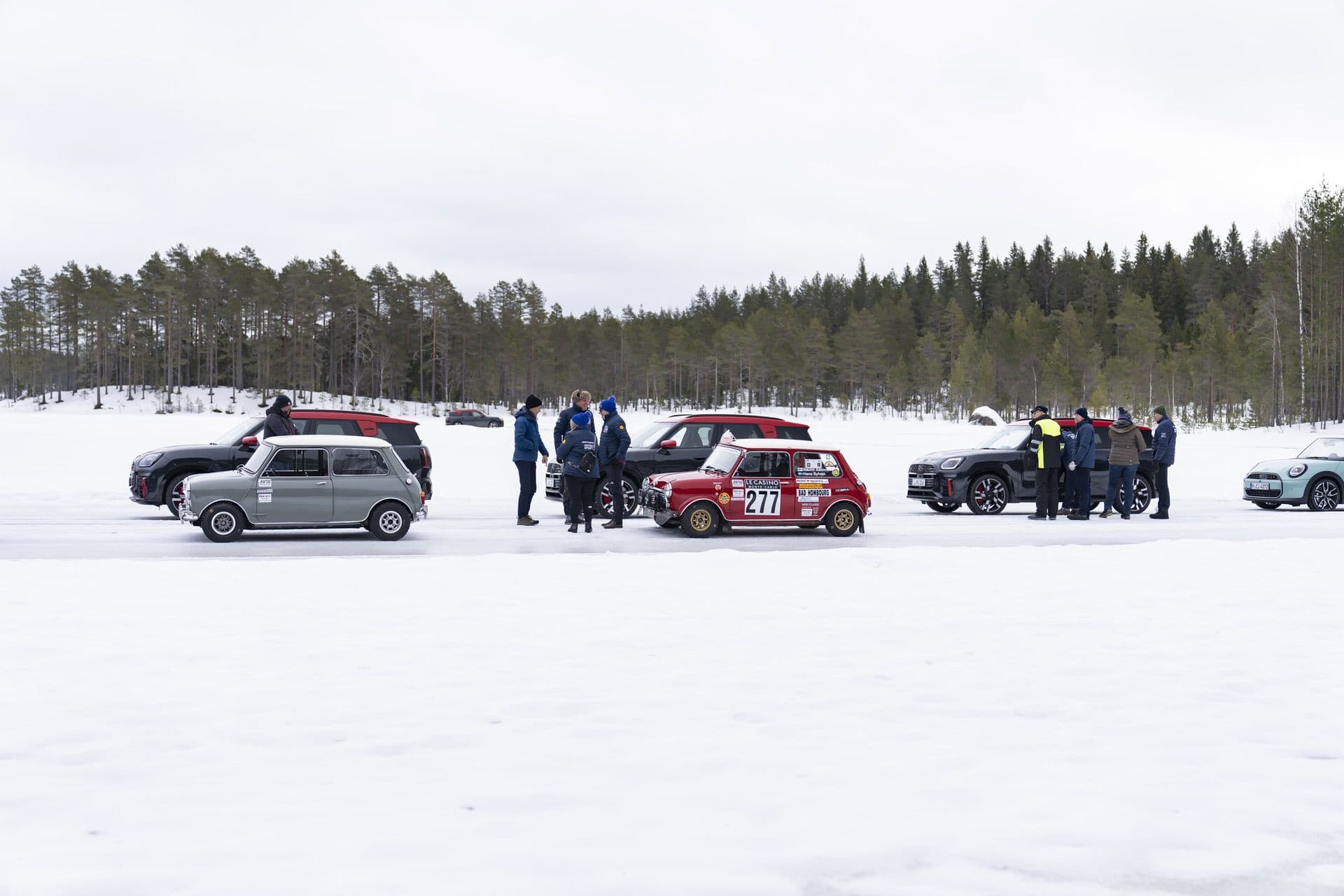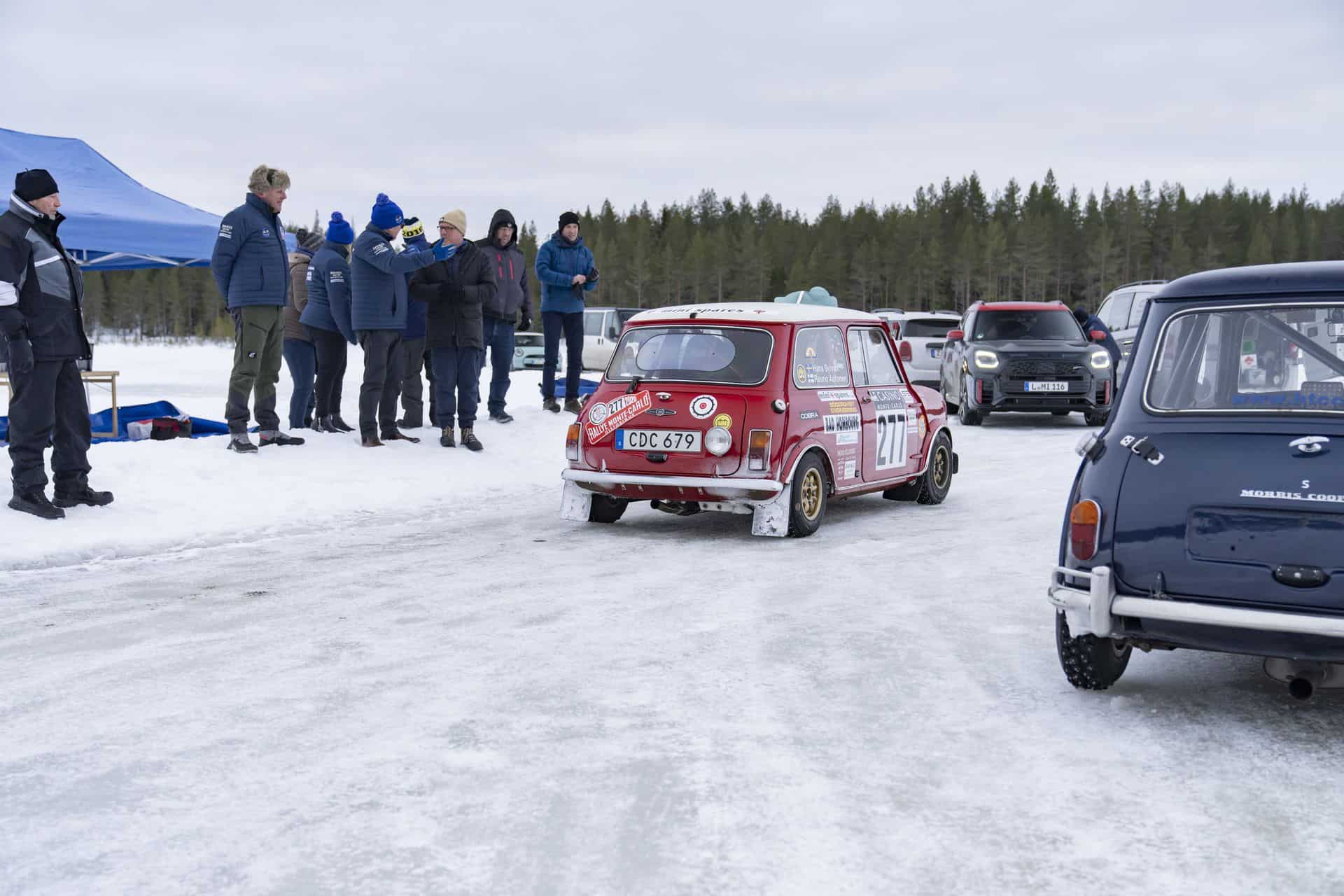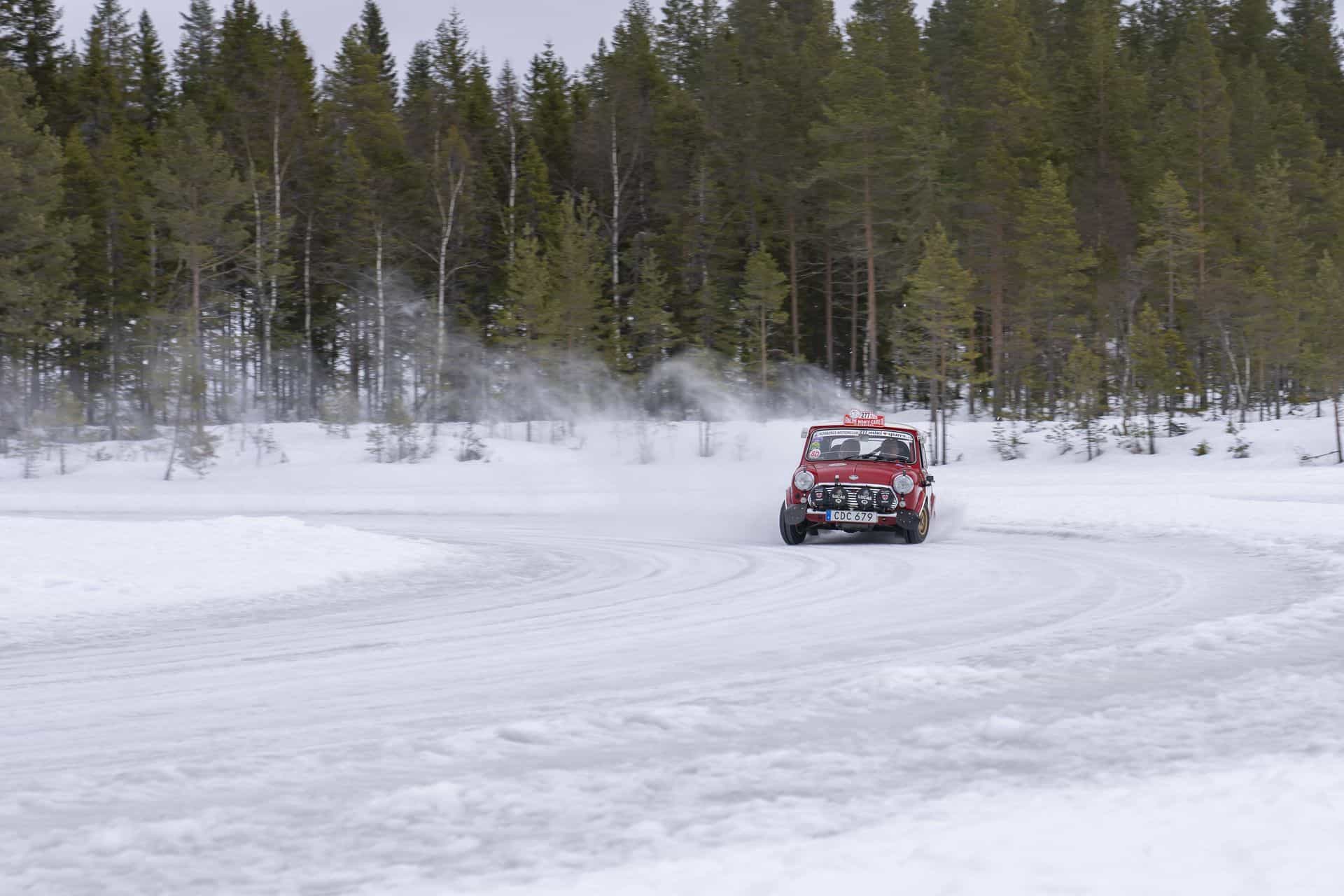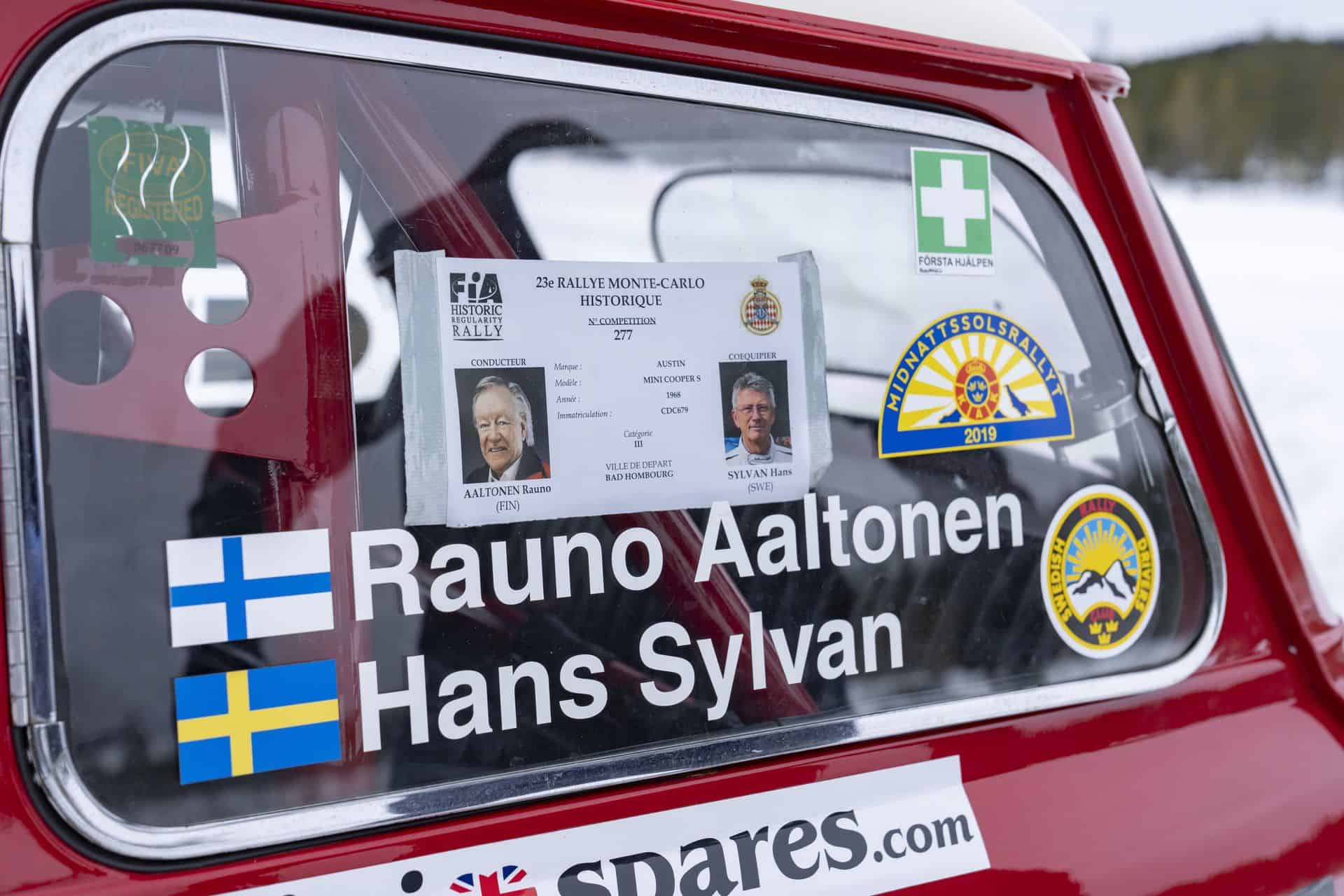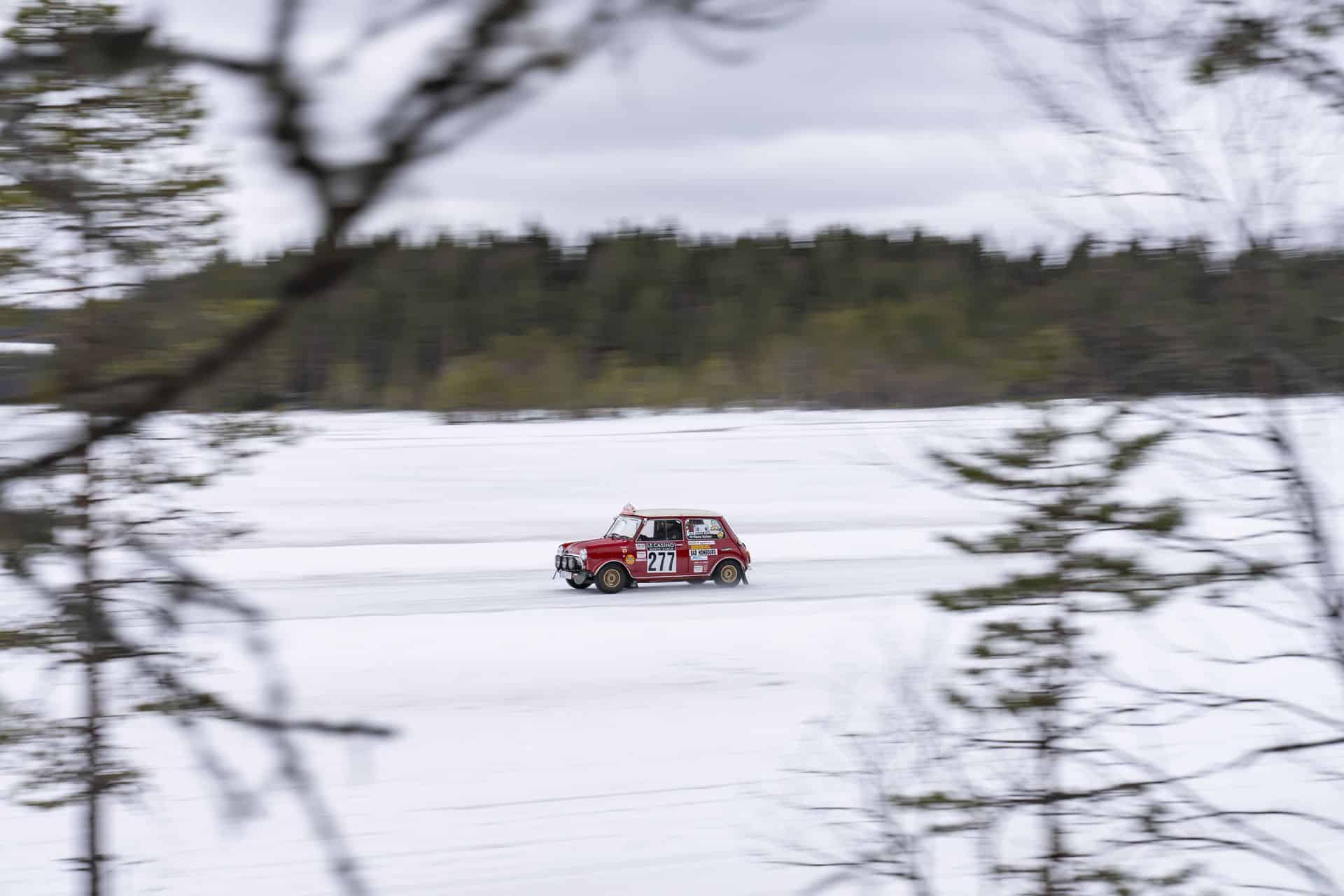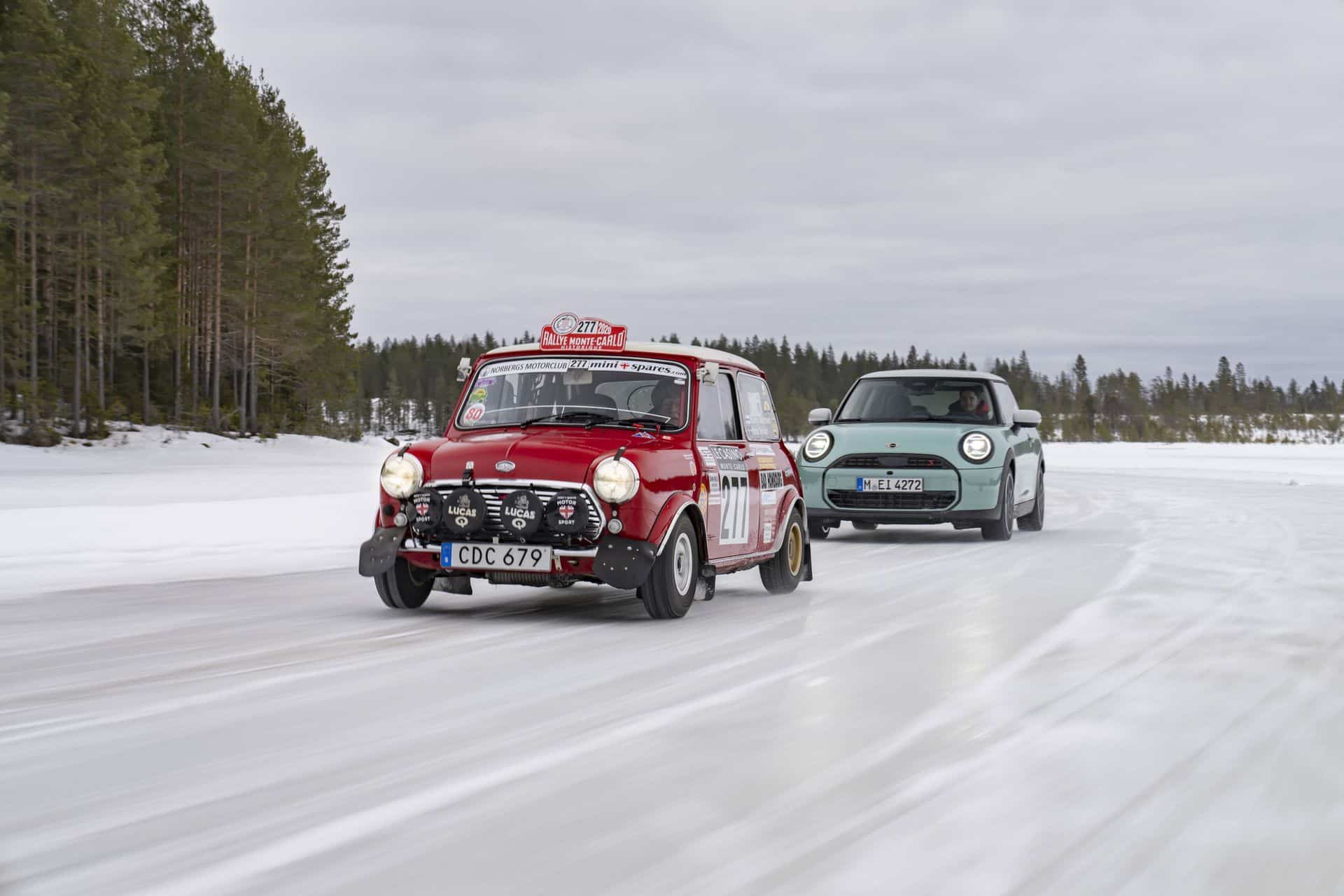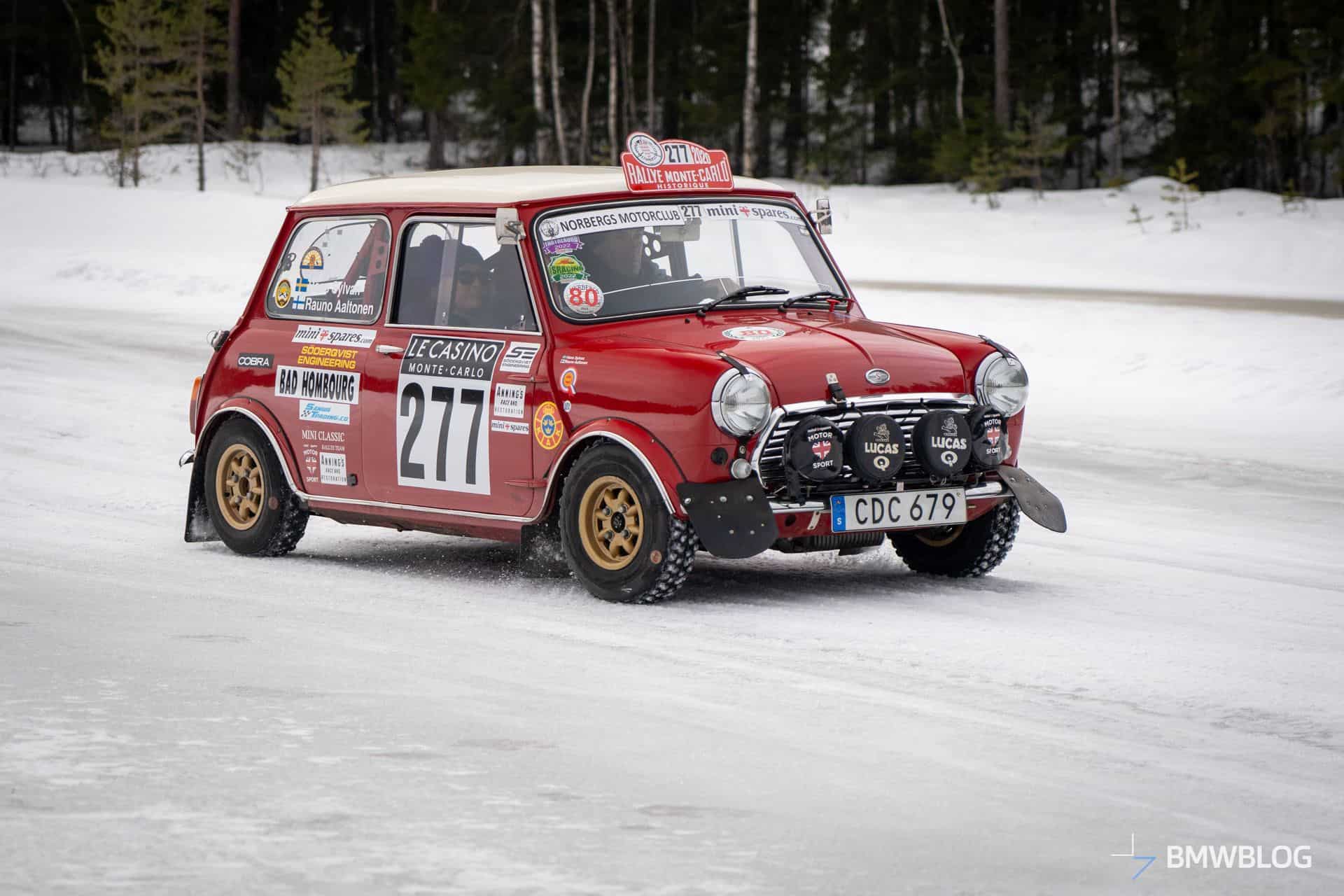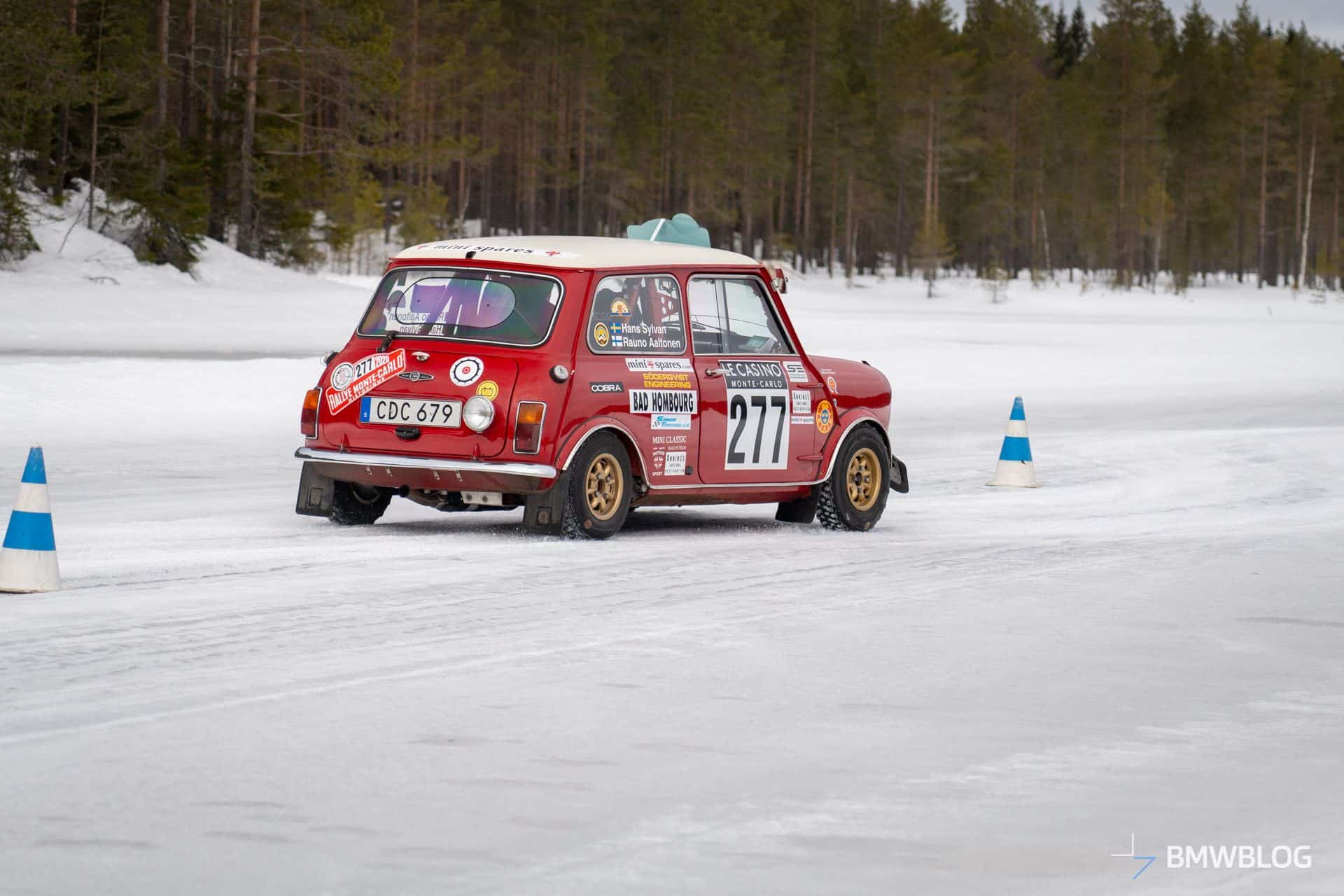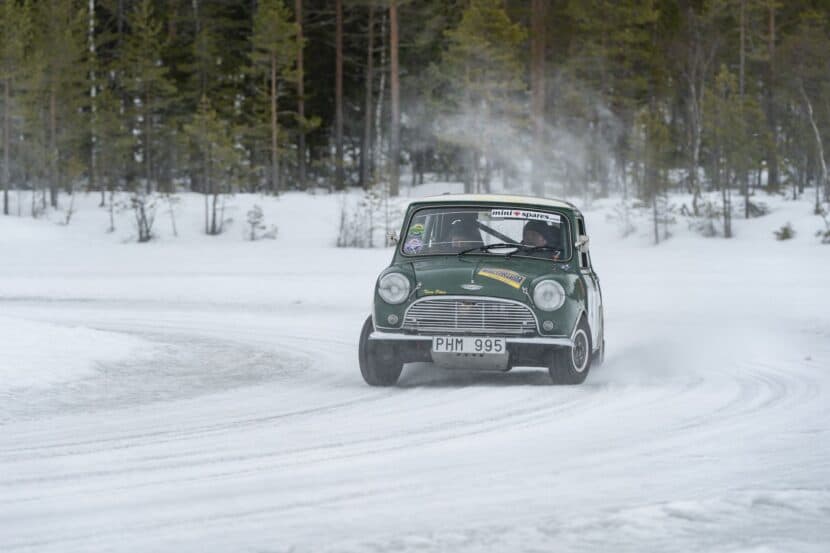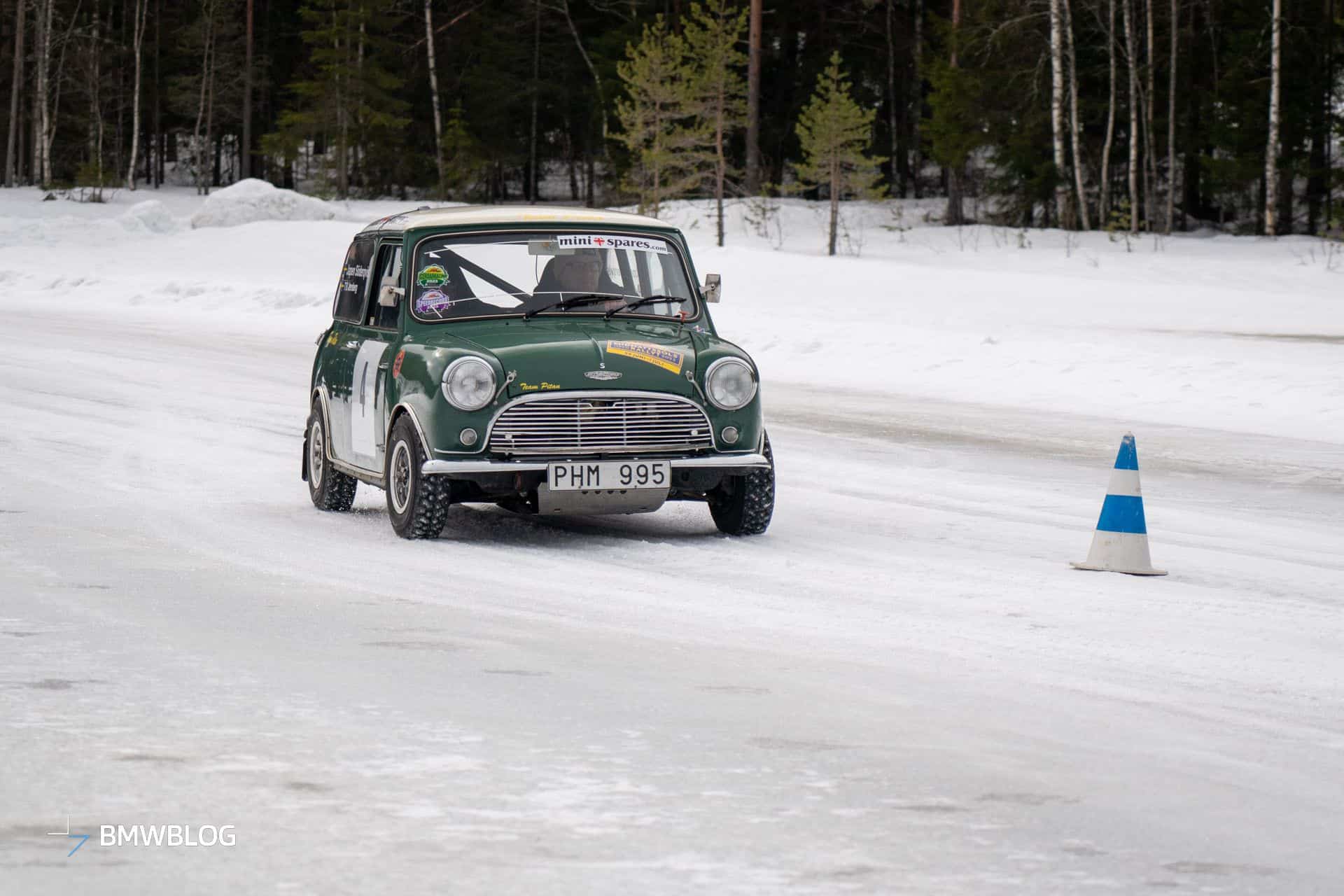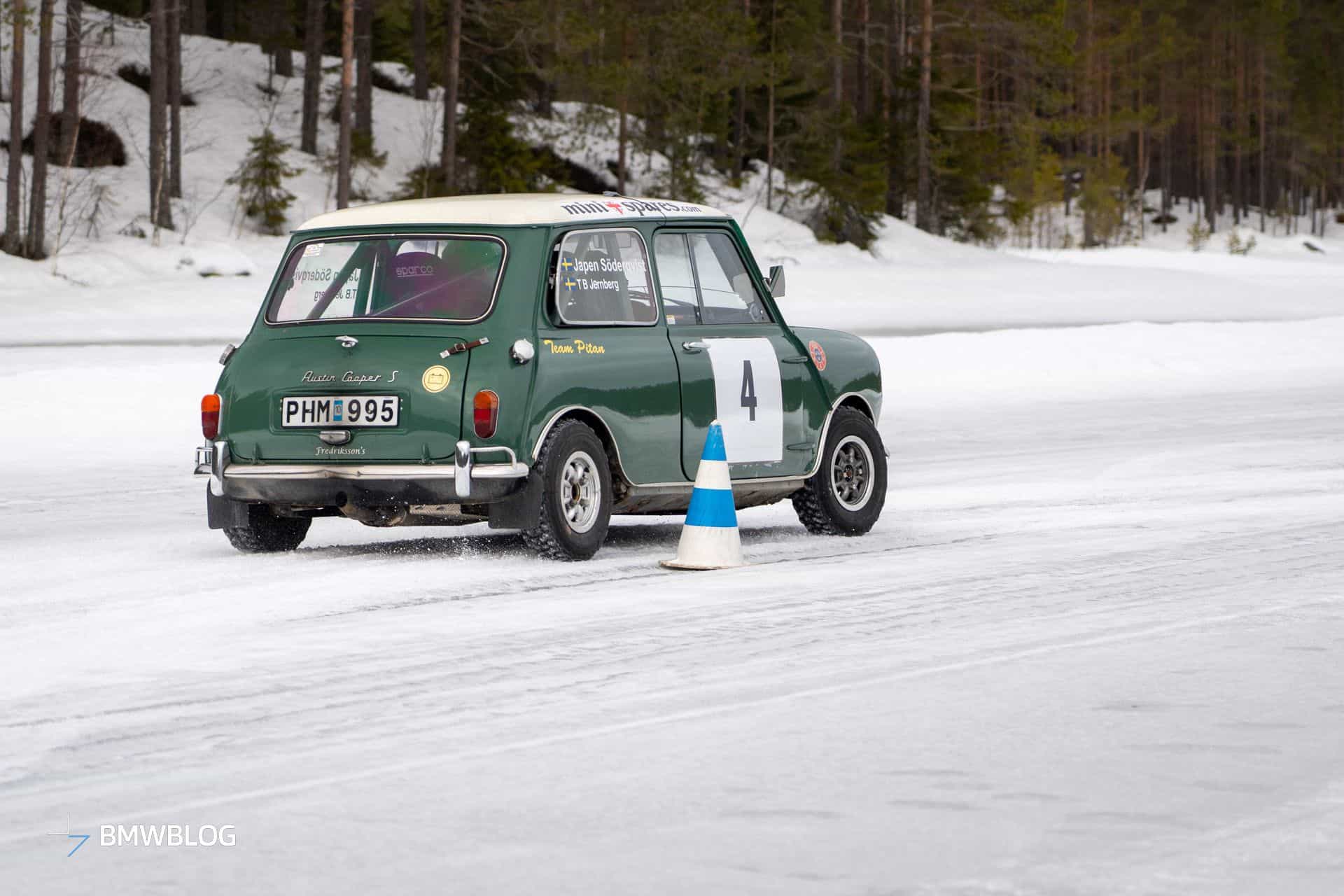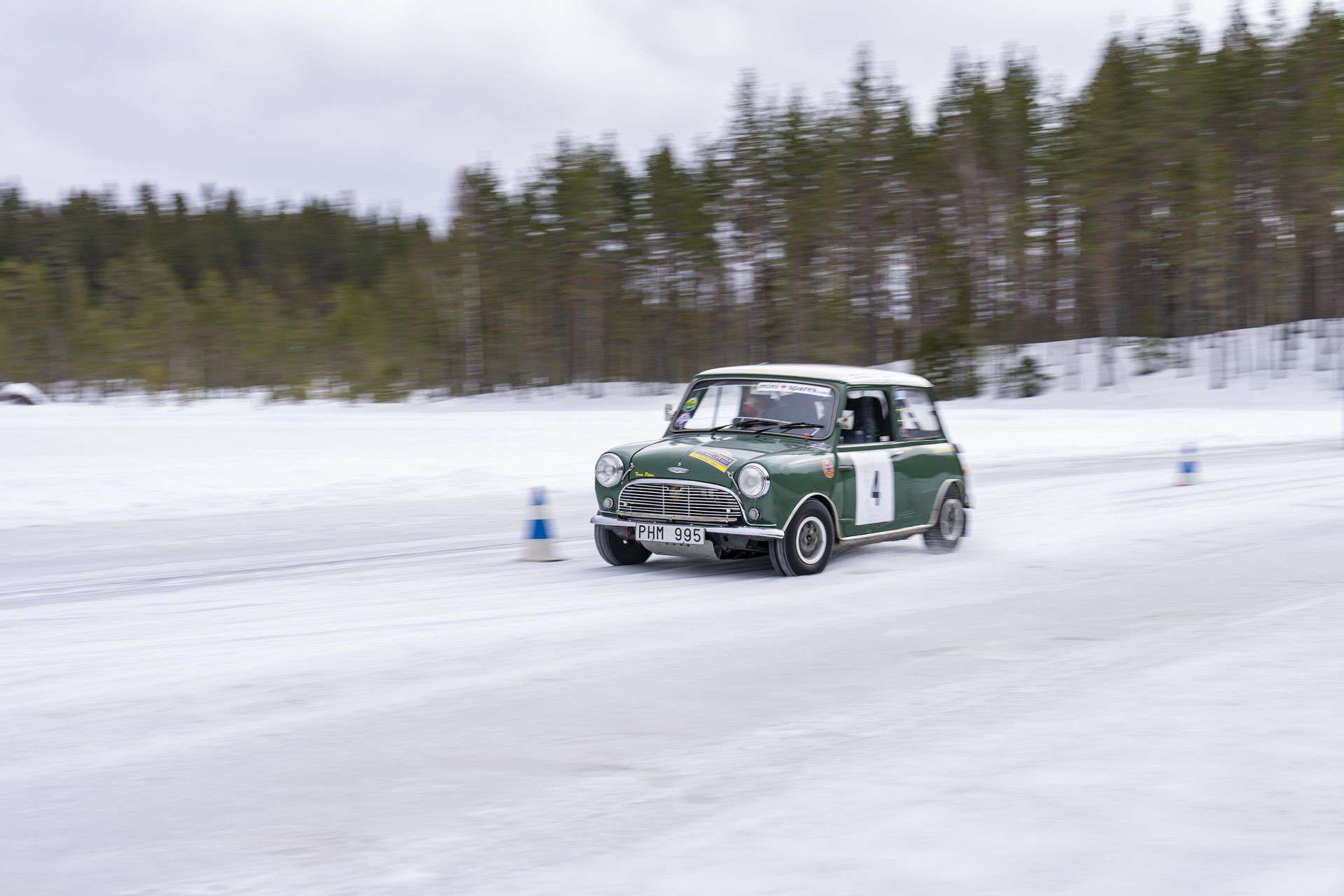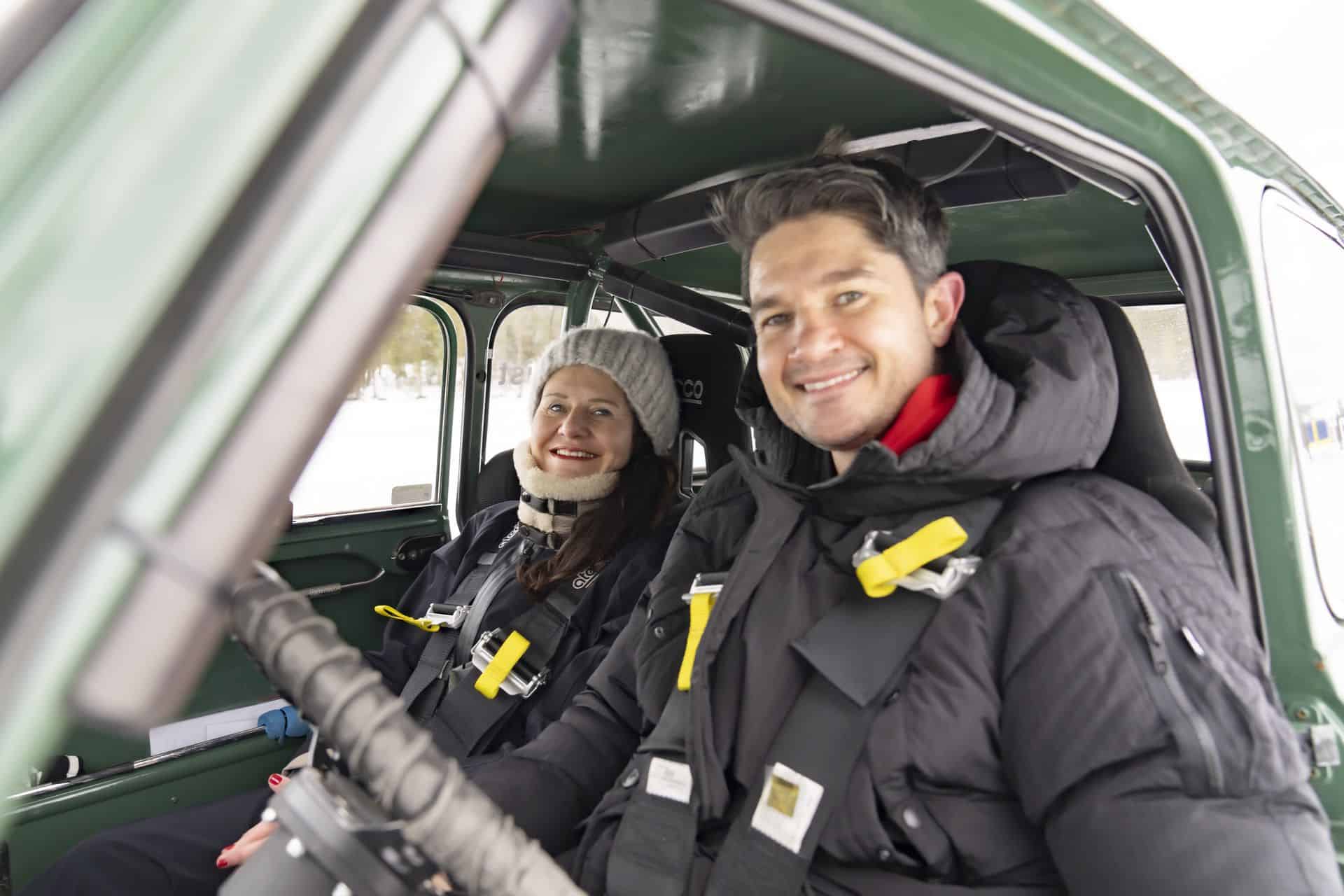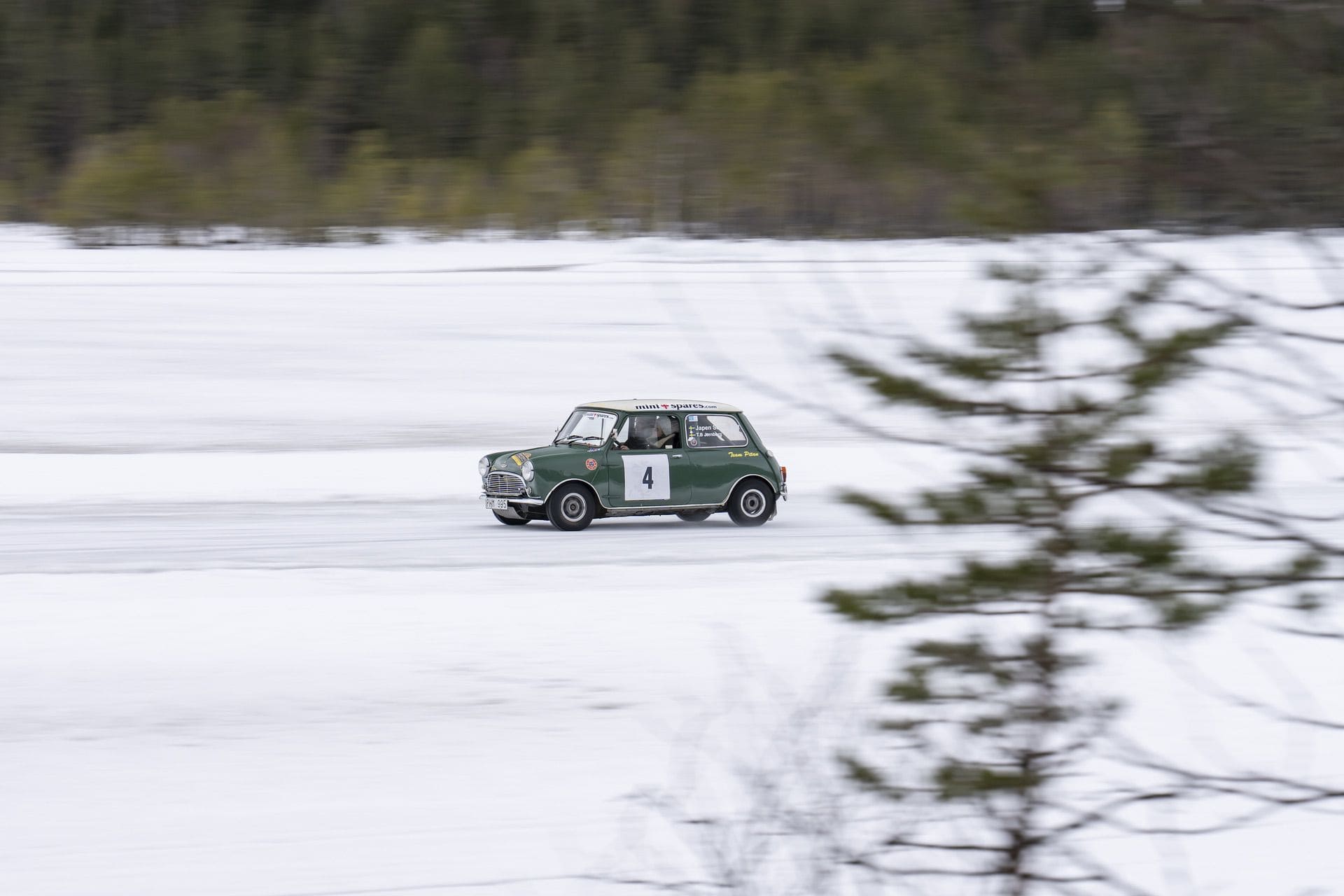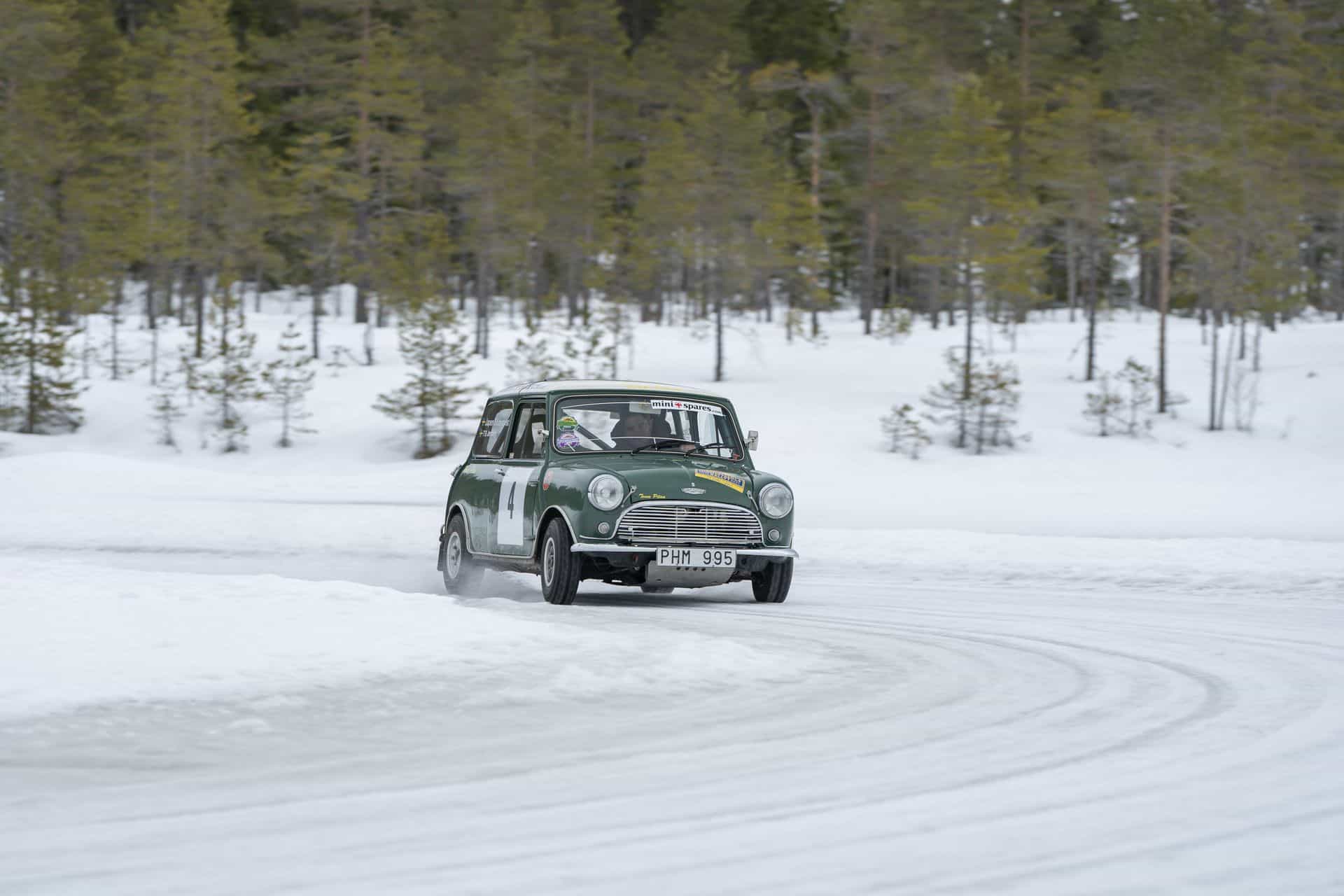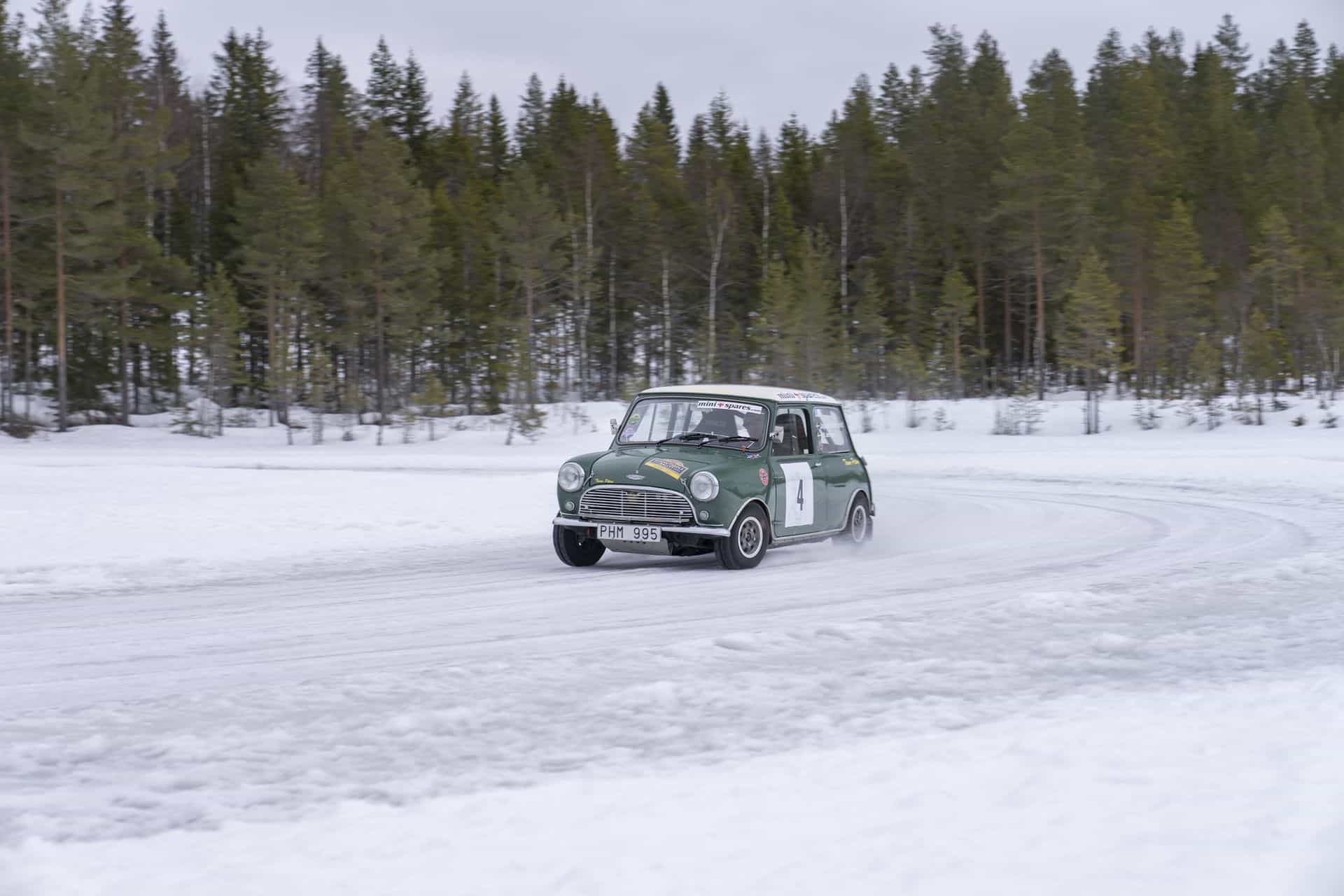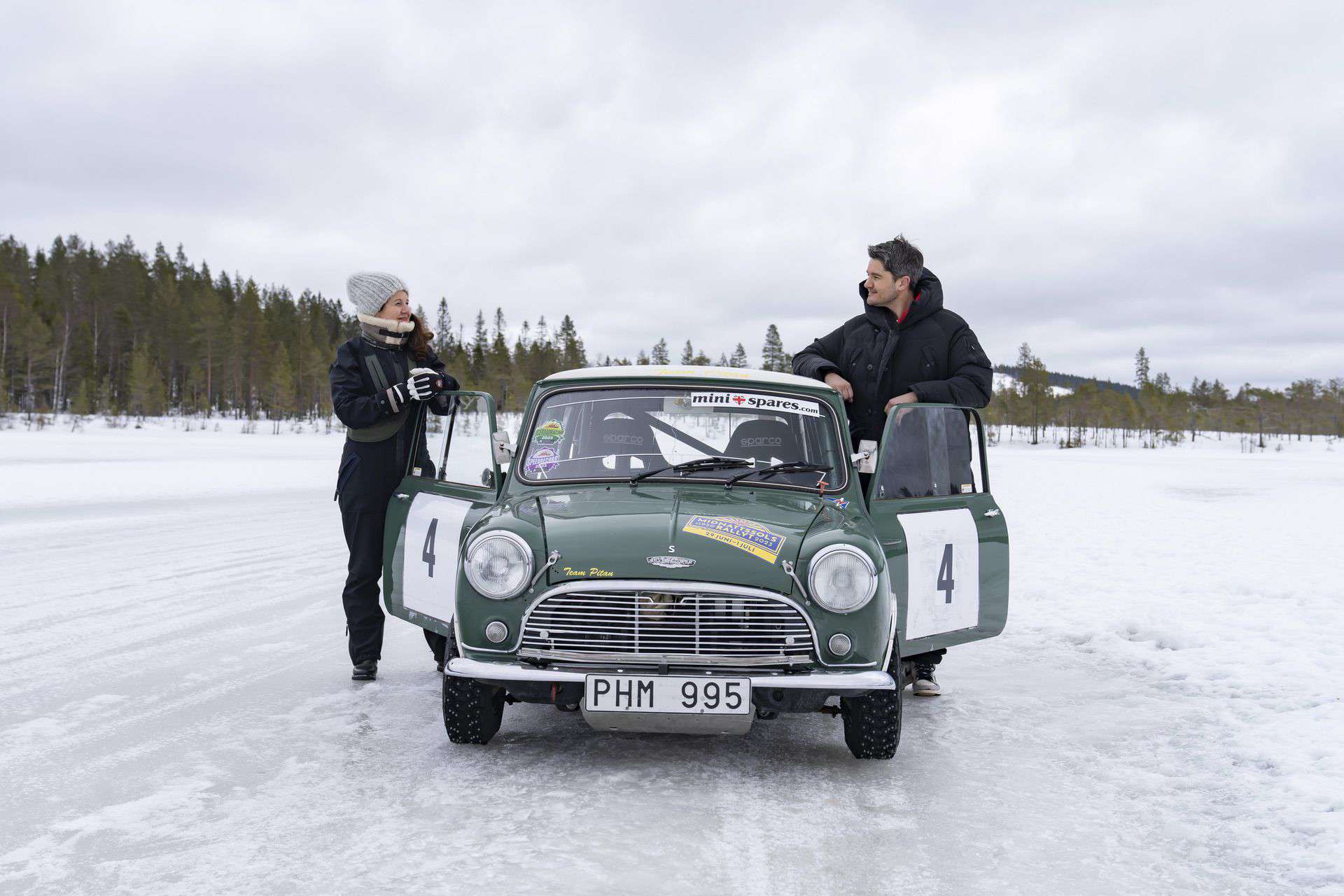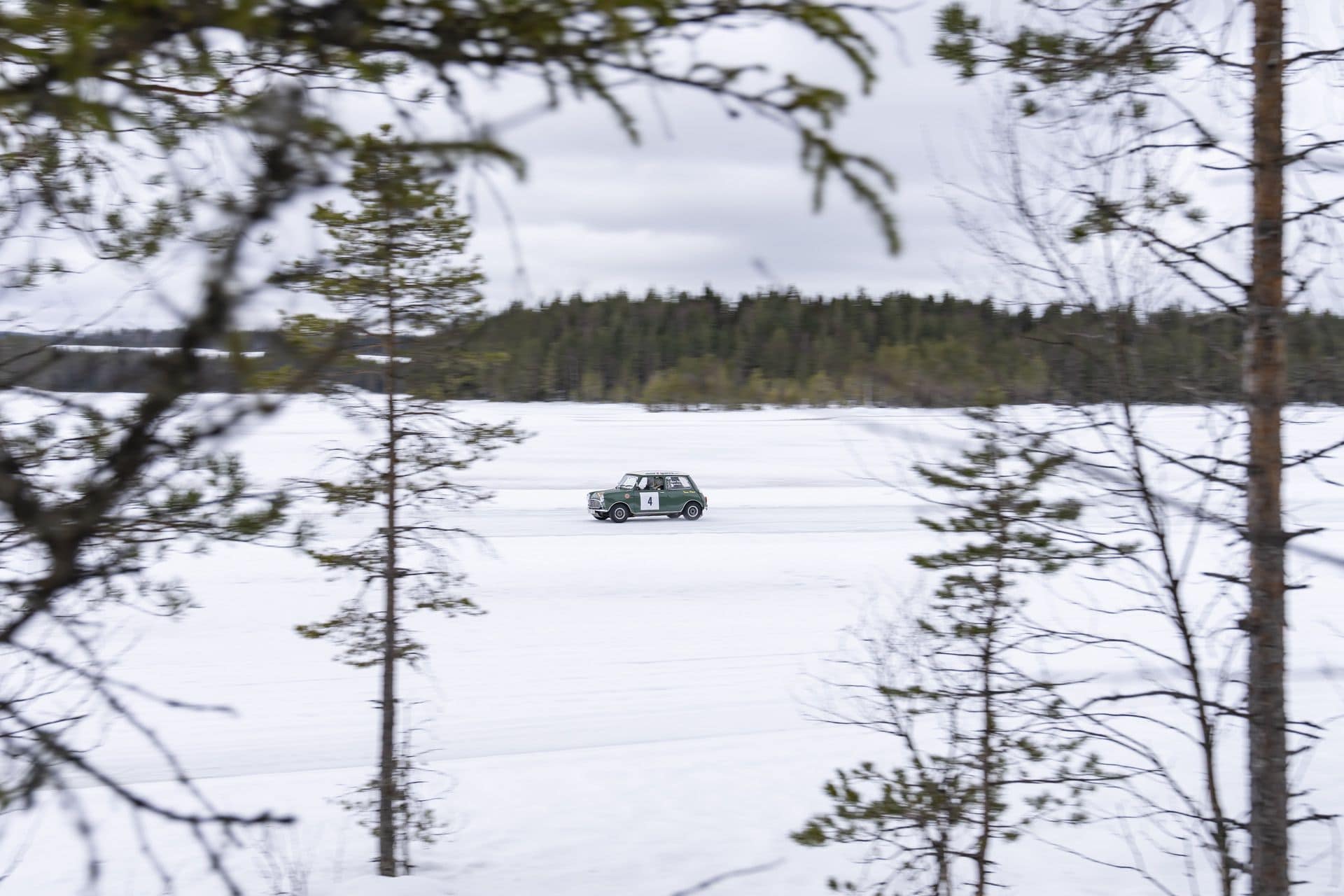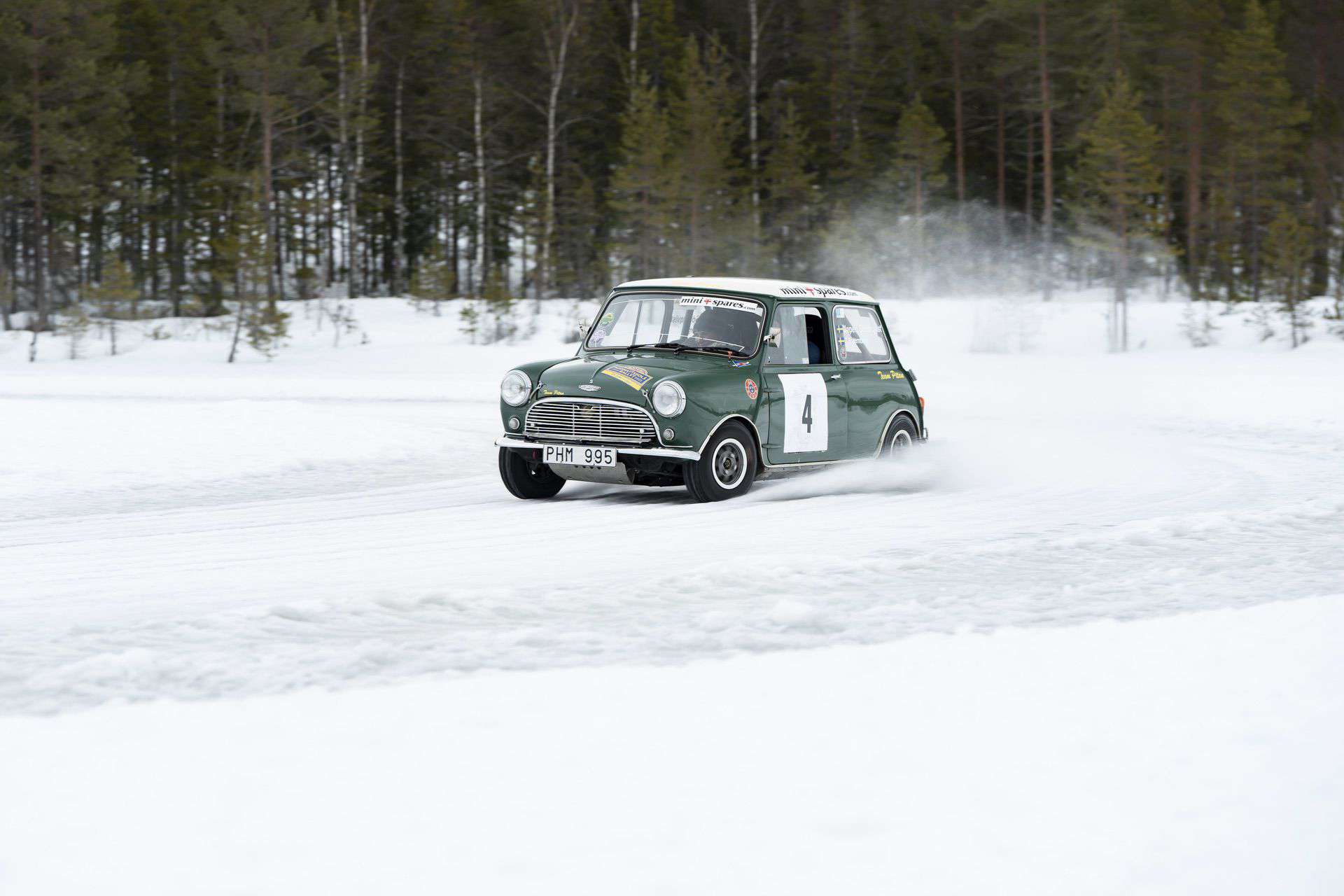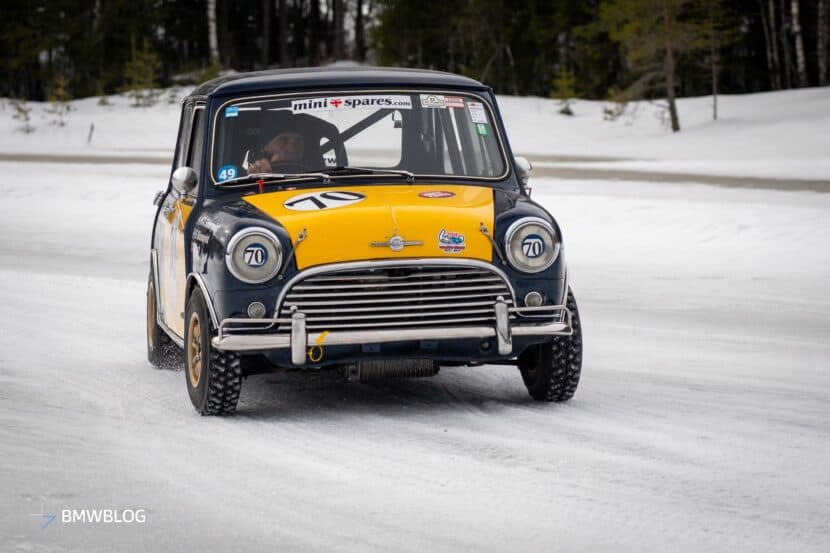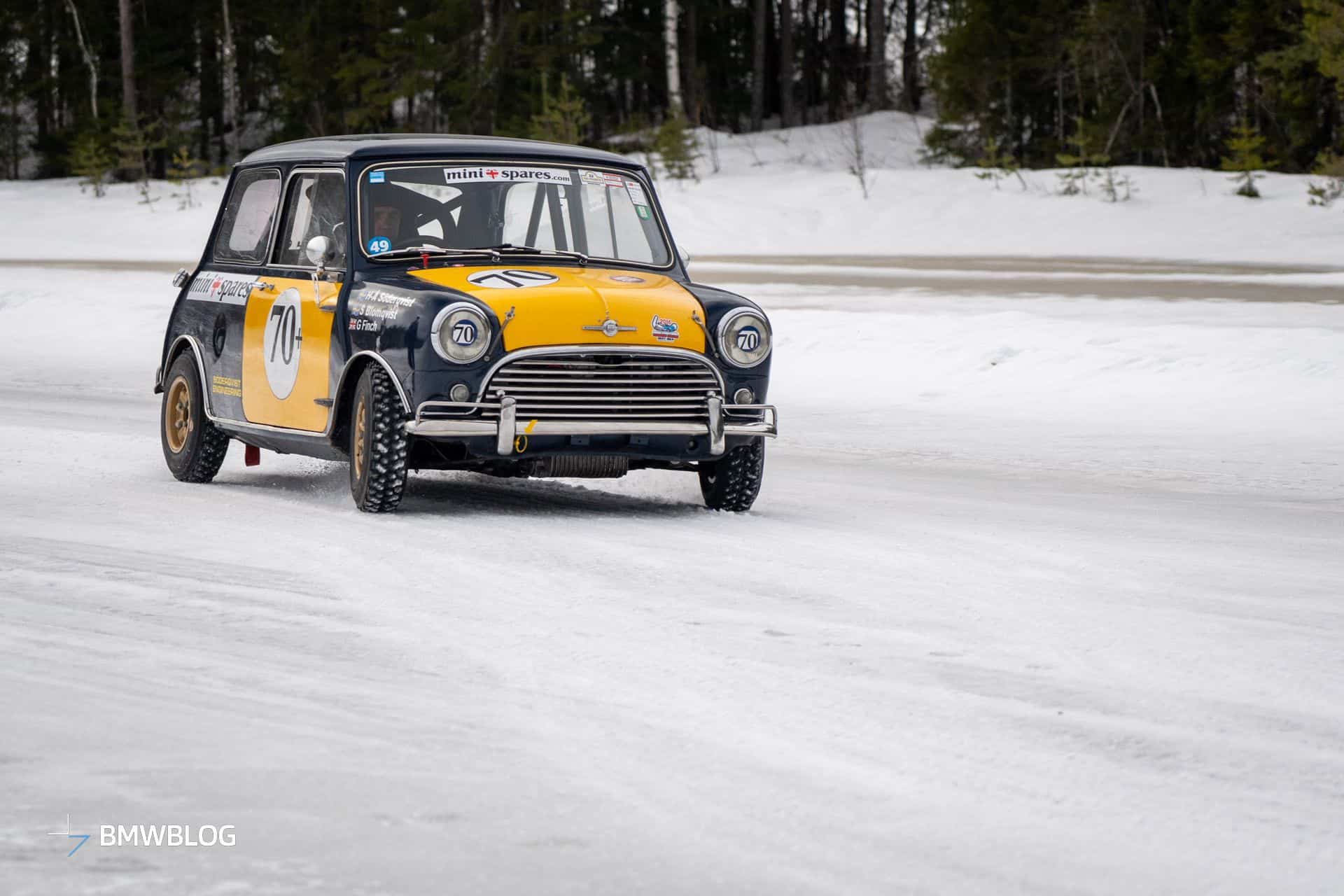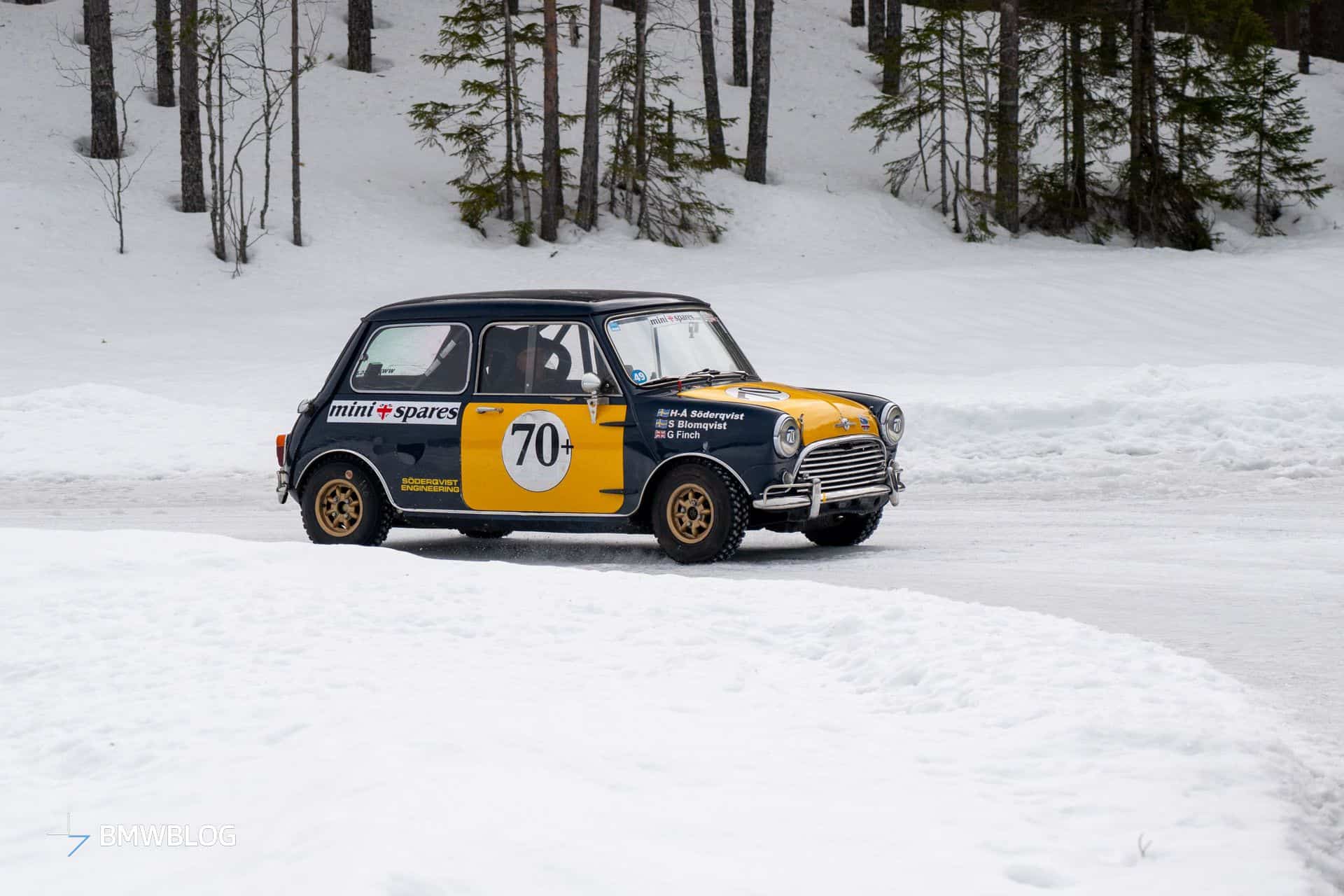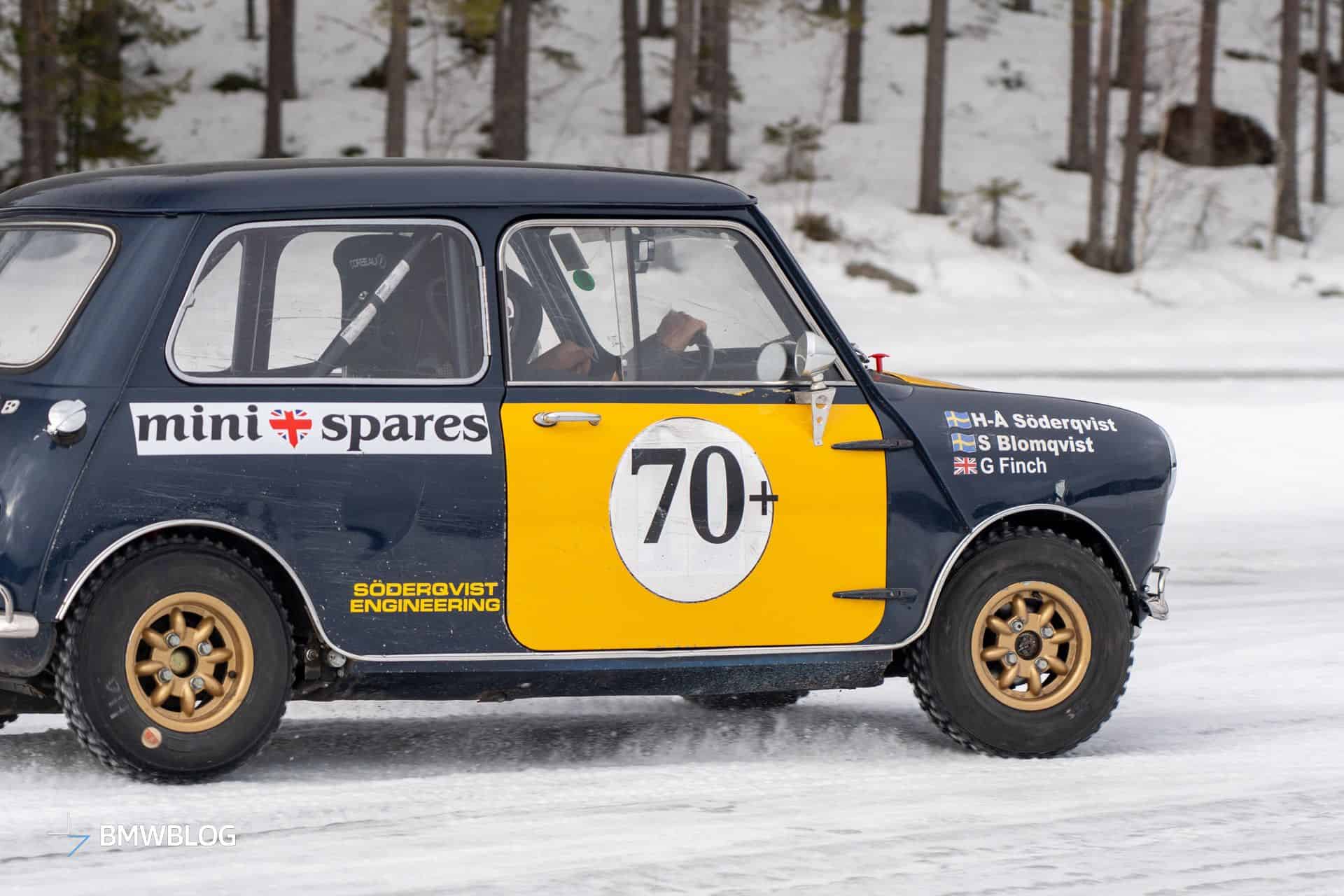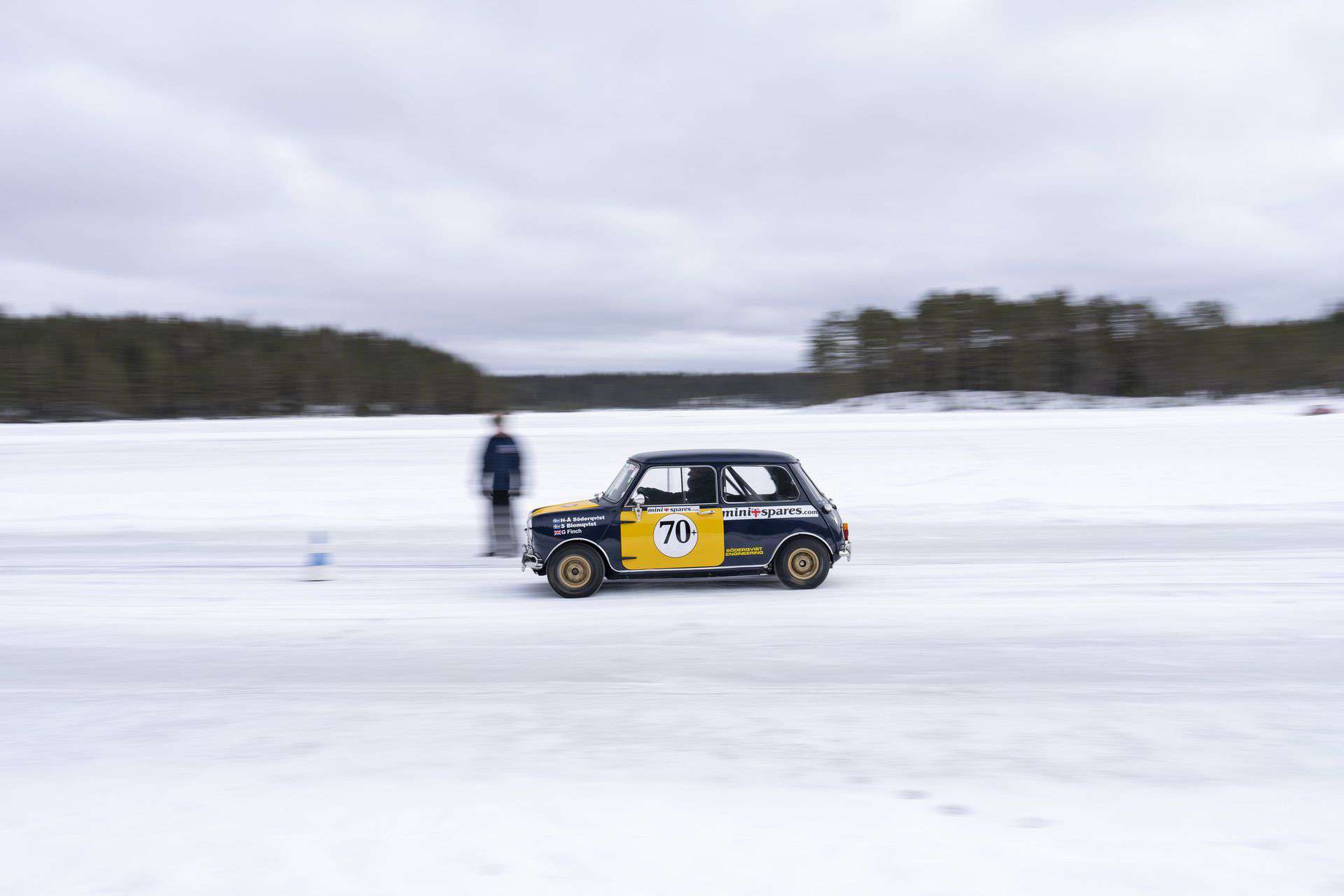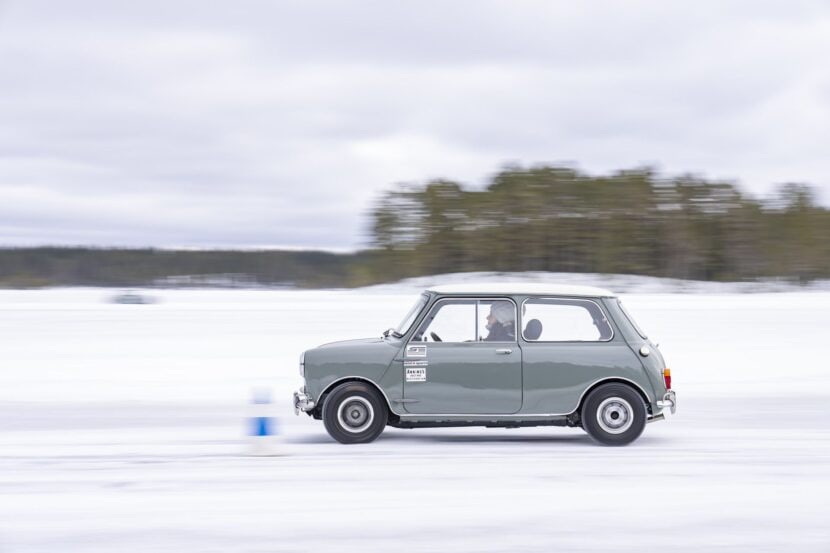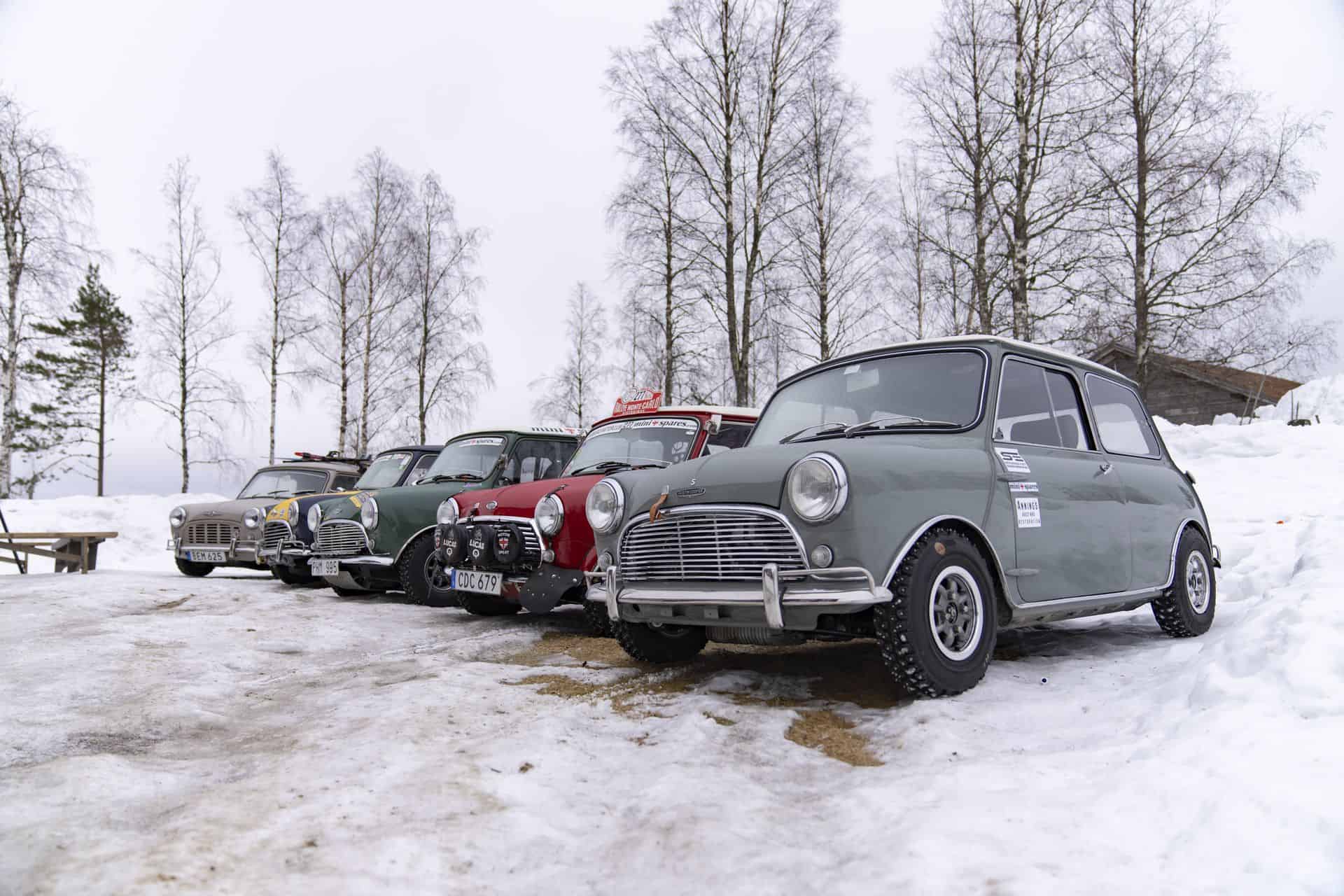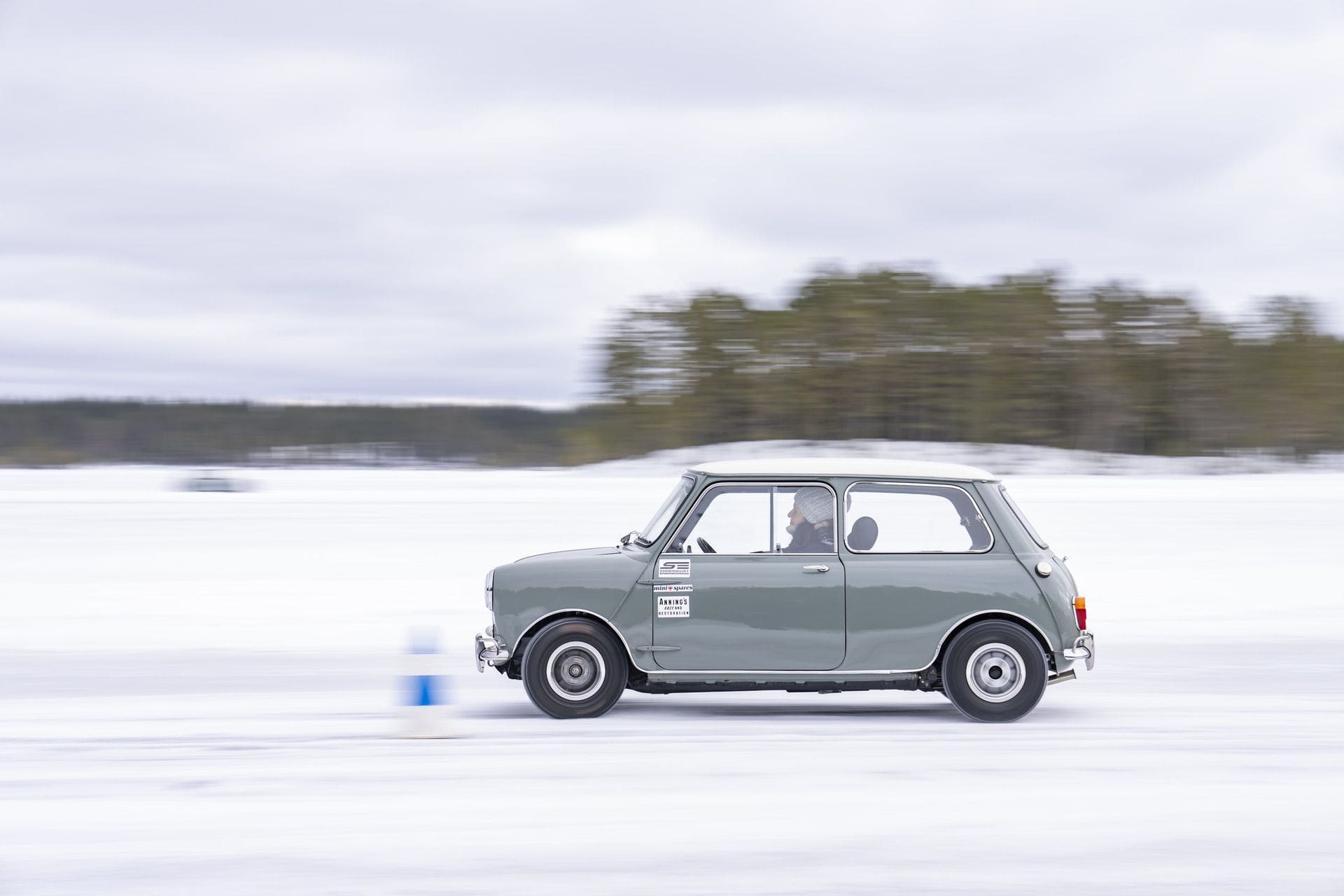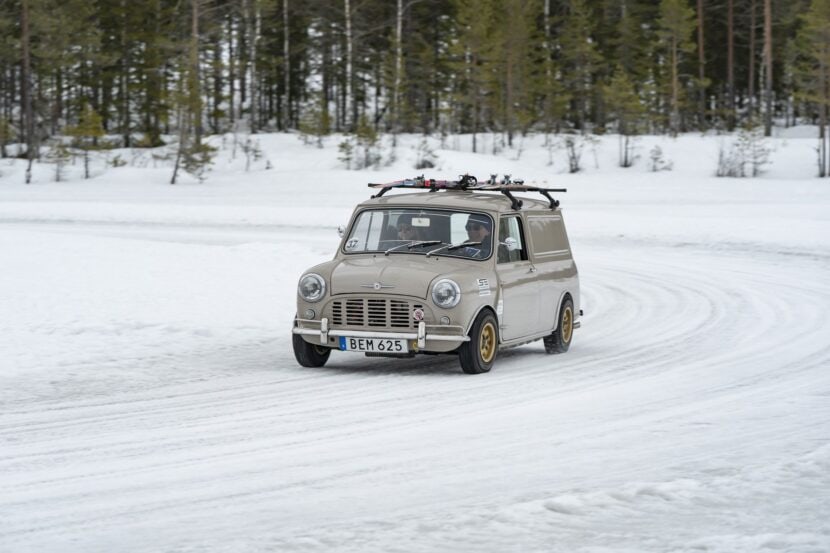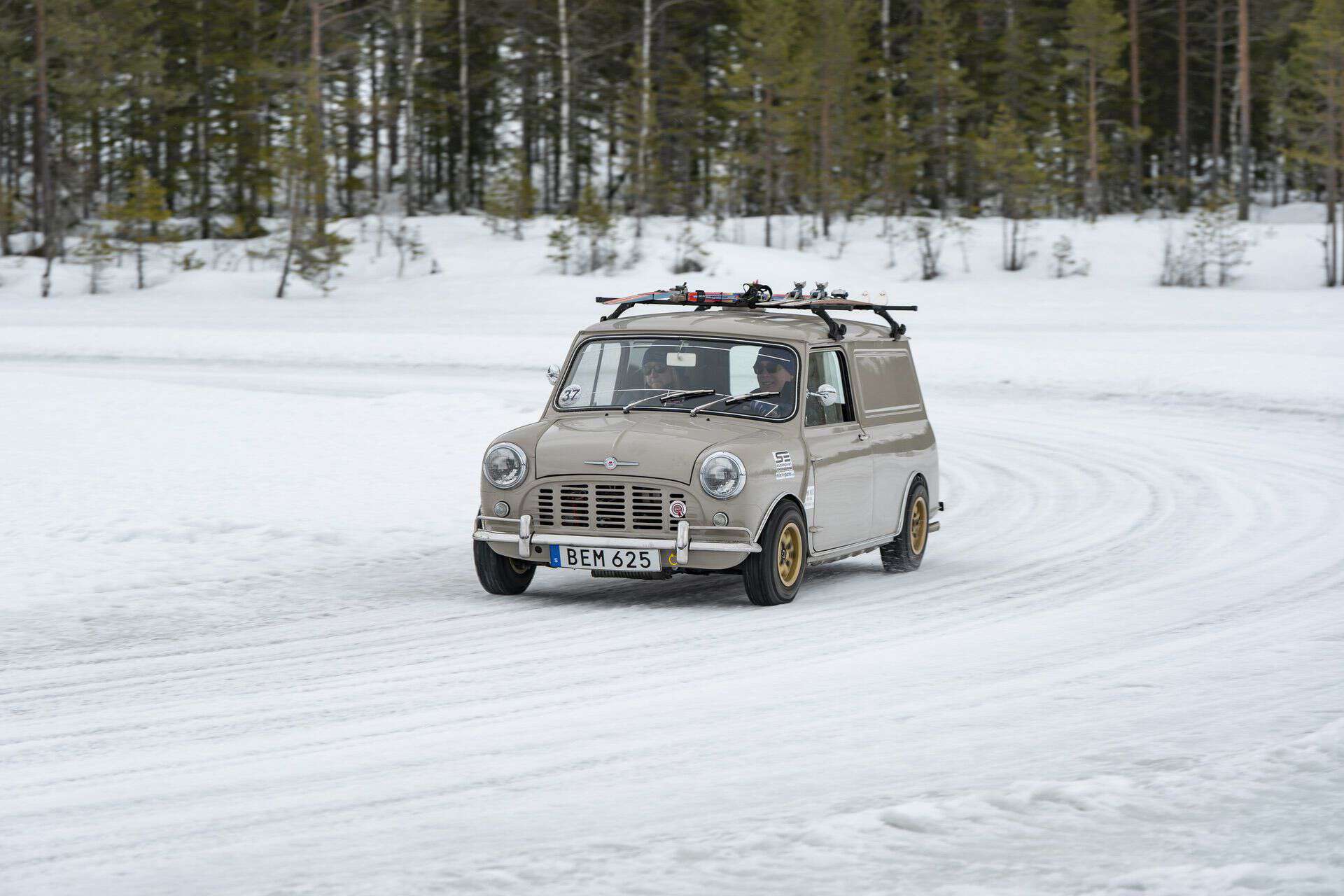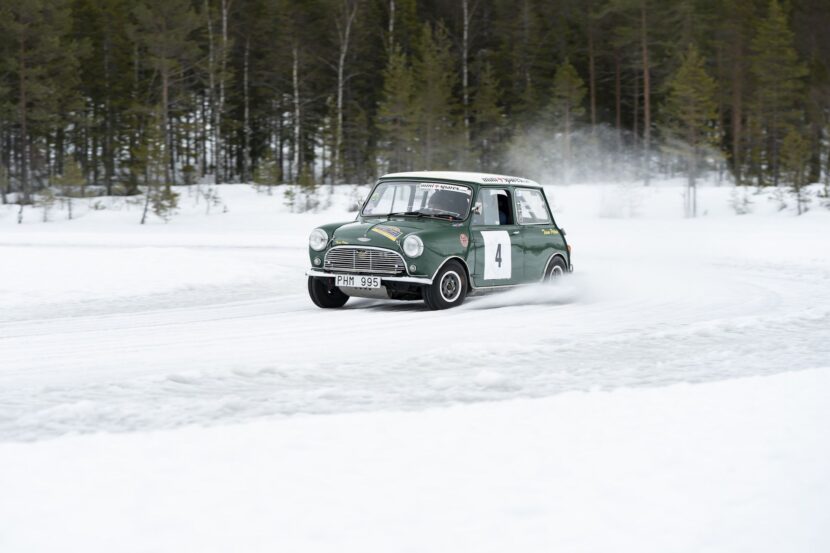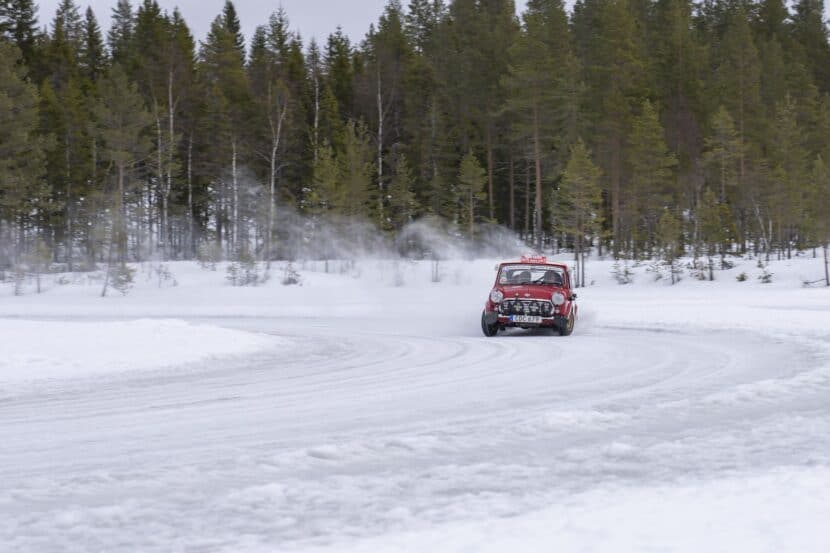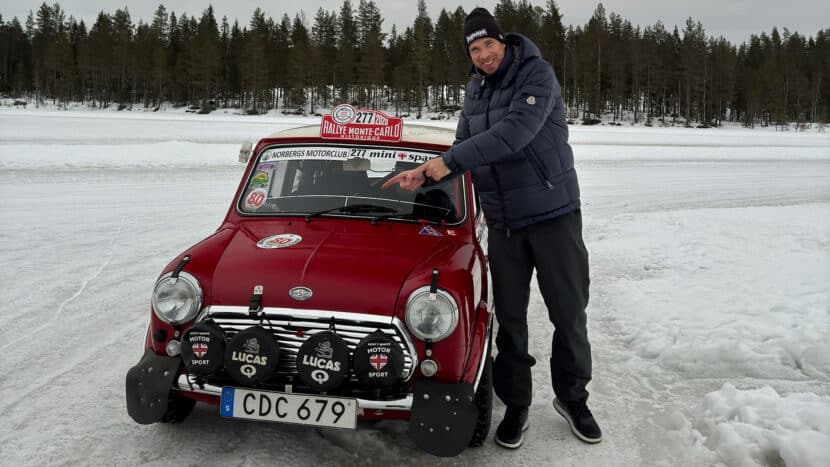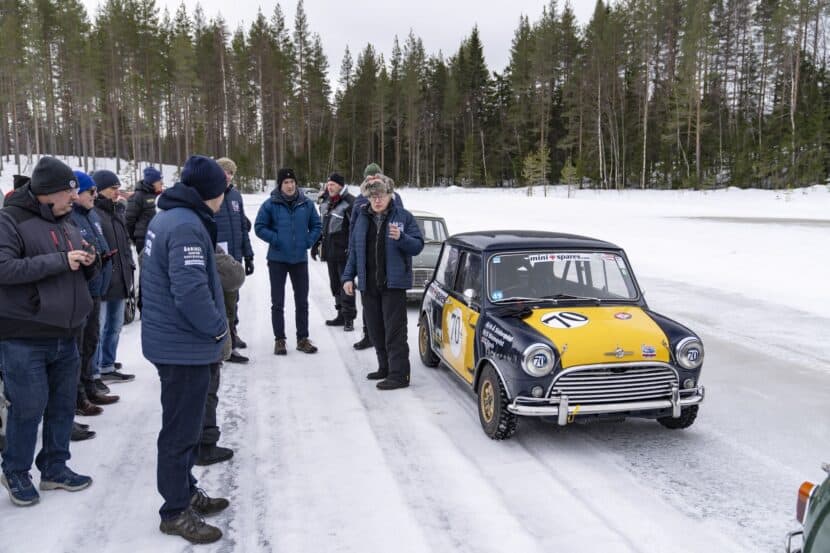The life of an automotive journalist is full of adventures. While it may not boast the highest salary, it’s undeniably abundant in experiences. Throughout the years, I’ve been privileged to experience extraordinary moments: navigating through Cartel territories flanked by technicals in a convoy, exhilarating sand laps at the Dakar Rally, tearing up F1 tracks, and even venturing to the North Pole as the first outsider to test drive BMW’s iX5 Hydrogen car. It’s a dream job, one that often leaves me feeling like I’m living in a pinch-me moment. And every time I think it can’t get better, life surprises me.
Only a few weeks back, an email from MINI popped into my inbox with an irresistible proposition: “We’ve got a last minute slot for a non-posh adventure in Sweden, where we’ll be driving classic Minis on ice,” it read. “Are you game?” Before fully processing the question, I was already packed and ready to depart. While posh adventures certainly have their allure, there’s an unparalleled rawness to impromptu journeys that essentially say: “Come over, and we’ll figure it out as we go.”
Anttila Bound
After a “quick” 16-hour journey (quick by my flying standards), via Munich, I touch down in Stockholm, where I link up with a group of MINI enthusiasts, led by none other than Stefanie Wurst, the head honcho, and Charlie Cooper, the grandson of John Cooper. Yes, that John Cooper. A lineup of brand-new MINI Countryman John Cooper Works awaits us for another “quick” 5-hour jaunt to the west of Stockholm, an area known as Anttila.
As night descends, we arrive at Anttilaberget, an adventure park brimming with cottages and camaraderie. Amidst the snowy labyrinth of lodges, we encounter a seasoned gentleman signaling us to halt. Rolling down the window of our JCW, there he stands: the legendary Rauno Aaltonen. Now, if that name doesn’t immediately ring a bell, allow me to jog your memory. At 86 years young, Rauno Aaltonen isn’t just any rally driver; he’s a living legend. Revered as the “Rally Professor” worldwide, Aaltonen has not only left an indelible mark on motorsport through his rally racing prowess but also through his fervor for coaching. As it turns out, that was the Easter egg concealed within that email: Aaltonen himself would be our driving instructor.
The Rally Professor
A quick, very non-vegan dinner serves as my introduction to the group. Individuals from various corners of Europe have journeyed to Anttila, seeking both learning and enjoyment on the frozen lakes. Refreshingly, this group comprises not just a couple of seasoned journalists who may have grown accustomed to it all, but rather, everyday enthusiasts. Their palpable excitement contrasts starkly with the jaded demeanor often found among us journalists after years on the beat. Engaging in conversations with this unique group, predominantly comprised of die-hard Mini aficionados, proves to be a breath of fresh air. Each member shares a distinct connection with Mini, whether through ownership of a classic or modern model, membership in a Mini club, or involvement in the restoration of classic Mini Coopers—a shared passion uniting us all.
The morning kicks off with a 30 minutes briefing led by Aaltonen who goes over the basics of driving a car, before jumping into more advanced driving techniques on snow and ice. With an impressive roster of over 20,000 students personally instructed by him, Aaltonen’s expertise is unparalleled. And at the Anttila Ice Driving School in Sweden, participants had the privilege of learning from the master himself through anecdotes and life stories.
“After all,” Aaltonen advises, discussing the consequences of drifting off a rally track, “if you must collide with a tree, aim for a younger one.” He also dispels some misconceptions, asserting, “When you’re barreling into a corner too swiftly with a front-wheel-drive car, easing off the accelerator is preferable to accelerating further.” Subsequently, he delves into the intricacies of left-foot braking, a technique he pioneered back in 1957. Lastly, he introduces us to the “Scandinavian flick.” This is a technique primarily employed in ice racing and rallying. It involves inducing oversteer by shifting weight to guide a vehicle through a turn while concurrently decreasing speed. But now it’s time to hit the slopes.
In contrast to my previous expedition to Arjeplog, BMW’s winter testing hub along with other automakers, Anttila feels relatively warmer. I vividly remember my trip to the North Pole, where I navigated icy drifts in the iX5 Hydrogen amidst a bone-chilling -40°C (-40°F)—a temperature that aligns precisely for us Americans. Anttila, by comparison, greeted us with a brisk -10°C (14°F) in the morning, rising to a relatively balmy 5 degrees Celsius higher later in the day.
Fully covered in winter gear, equipment ready and charged, and a MINI Countryman JCW at my disposable, I set for quick drive to the nearest frozen lake. A lineup of four Mini Coopers was waiting for us, each one of them unique in their own way:
A Red and White Monte Carlo Car: 1968 Mk2 Morris Mini Cooper S
This beauty boasts a 1293cc Grp 2 tuned by Annings Race and Restoration, delivering 119 horsepower in a lightweight package weighing just 640 kg. With features like reinforced chassis, rally shock absorbers, and a safety cage, it’s a tribute to Rauno Aaltonen’s 1967 Monte-winning Mini, making it a true icon on the ice. The car was built to commemorate Rauno’s 1967 Monte Carlo-winning Mini with help from Robert Young, former chairman at the Mini Cooper register. The car was driven by Rauno in Rally Sweden in 2019 and in Monte Carlo Historique in 2020. This was Aaltonen’s last competitive event he took part in. The car also ran in the 2019 Midnattssolsrallyt, a four day gravel rally in Sweden in which it achieved a class victory. Söderqvist Engineering is owner of the car.
1965 Mk1 Austin Cooper S
Owned by Hans Åke Söderqvist, this 1965 Austin Cooper S is a veteran of over 50 gravel rallies, showcasing its durability and performance pedigree. With a 1293 Gr 2 tuned engine and rally-ready features, it’s a formidable contender on any terrain. Even though it has only 110 horsepower, it makes up for it with a low weight – 630 kg.
1965 Mk1 Morris Cooper S
Built for circuit racing, this Mini Cooper S boasts an impressive racing heritage, having been driven by Swedish racing legend Picko Troberg himself. Picko won 9 championships with the Mini Cooper. He ran with this car in the European Championships during the end of the 1990s. Also, Stig Blomqvist drove the car to victory at Brands Hatch Mini Festival in the UK in 2016. It has 130 hp and a regulation minimum 620 kg weight.
1965 Mk1 Austin Cooper S
Freshly restored to its original glory with a few sports upgrades, this Austin Cooper S offers a balance of classic charm and modern performance. With a lightly tuned engine – 90 hp – and sporty enhancements – Restall sport seats, sports shock absorbers – it’s a joy to drive on both road and track.
1962 Mk1 Morris Mini Van
Recently restored and upgraded, this Mini van combines vintage charm with practicality. With a mildly tuned 1275 engine and modern enhancements, it’s ready to tackle any adventure, whether on or off the road. Even though it makes only 80 hp (weighing 400 kilograms), this van will put a smile on your face.
Beginners Course First
The ice driving school starts on a compact course, allowing participants to acquaint themselves with the unique characteristics of the Minis. These modified rally vehicles differ not only from contemporary cars but also from those of their era. Engaging in a brief slalom exercise, I gain insight into the tactile feedback of the old-school mechanical steering system. The slim, broad-rimmed wheel delivers a direct connection between the front tires and the icy surface, while navigating corners demands a full workout.
After completing a reconnaissance lap, I begin to grasp the nuances of ice driving and gradually push my Austin Cooper S. Handling the narrow pedals proves challenging with my size 47 boots (US 13), yet I swiftly adapt, realizing that constant shifting is unnecessary. Driving on ice prioritizes maintaining a controlled drift through corners over keeping the wheels aligned with the curve. The Minis offer a raw and captivating driving experience, surpassing anything I’ve encountered recently in terms of sheer enjoyment. Though they may not boast exceptional speed, their dynamic nature ensures a fun ride unlike any other.
The Big Boys Course
Now, as a group, we’re ready to advance to the main track—the big leagues. This 2-3 mile-long loop boasts sharp, high-speed corners, punctuated by a brief straight stretch. Unlike conventional racetracks, this icy circuit prioritizes the mastery of proper rally techniques. Opting for the Monte Carlo replica, with its 120 horsepower, I’m drawn to its status as the fleet’s fastest and relatively more contemporary model. Its spacious interior offers a welcome relief, especially with fixed seats—something that proves particularly beneficial for someone like me, standing tall at 1.9 meters (6’2″).
A bit of personal background: While I’m no rally driver, my driving journey began with a four-speed stick shift, front-wheel-drive vehicle lacking anti-lock brakes—a trusty 1310 Dacia. Moreover, for a couple of years, I navigated through treacherous snowstorms for hours on end in the Land of Dracula, Transylvania. So, while I may not be unfamiliar with stick shifts and challenging weather conditions, that was a quarter-century ago.
I’ve never harbored a desire to relive those past times, and my initial approach to driving in harsh weather conditions is one of carefulness. However, after a single lap on the snow track in this rally Mini Cooper, I’m feeling ready for the next push. With each acceleration and cornering maneuver, this classic Mini feels balanced with the front tires gripping onto the ice while tail does its thing. What I learn quickly is that countersteering is your best friend and rally driving is not about being smooth with the steering wheel. Pull hard left and right until you get the proper drift angle, and then control the lateral forces with the gas pedal.
Of course, it’s easy to maintain a drift on ice, but it’s one thing to be able to go fast while drifting. And I didn’t realize how slow I was until I hopped for a hot lap with Stig Blomqvist. Now the legend says that Top Gear named their driver after him (even though there are conflicting reports on this), but that doesn’t take away from the successful racing career of Blomqvist. Driving an Audi Quattro, Blomqvist won the World Championship drivers’ title in 1984 and finished runner-up in 1985. Fun fact: he’s also the father of Tom Blomqvist, former BMW Factory Driver and winner of the 24 Hours of Daytona. I interviewed Tom when he was racing for the BMW Formula E team.
Now, Blomqvist senior demonstrates the prowess of a WRC champion on ice, demonstrating the essence of the Scandinavian Flick. His unconventional 1 and 11 hand positioning on the steering wheel is a distinct characteristic, although another seasoned driver dismisses its significance, asserting that Blomqvist primarily utilizes his feet for steering. True to this observation, Blomqvist navigates corners with breathtaking speed, skillfully testing the limits of the front tires’ grip. As we hurtle through the icy terrain, with snow and ice swirling around us, it feels as though we’re driving a 500+ horsepower beast.
Everyone is there to help you learn
Naturally, not everyone feels immediately at ease on a frozen lake, and that’s perfectly understandable. This is precisely why Aaltonen and Blomqvist are present. They’ll sit alongside you, offering one-on-one driving instructions. Their guidance proves invaluable, even for someone like myself who has some track experience under their belt. So, if you’re apprehensive about lacking the requisite skills, fret not. This school caters to beginners and intermediates alike, providing an opportunity to either learn the ropes of ice driving or refine existing skills. And all of this is facilitated with the trademark dry wit and warmth of Scandinavian humor.
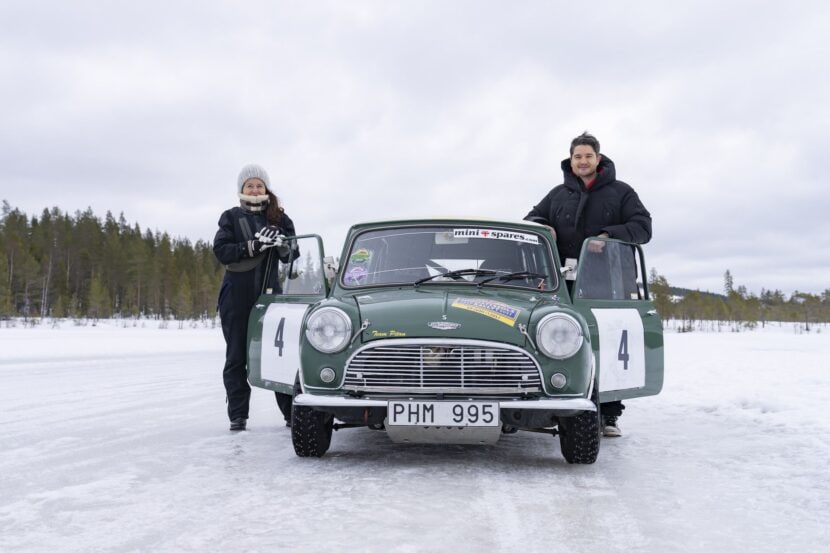
As the day draws to a close, I have the pleasure of teaming up with Charlie Cooper. It’s an absolute delight spending time with the Brit, not only because he shares with me numerous Cooper anecdotes but also because of his sharp wit and great charisma. And to top it off, he’s quite the skilled driver. Charlie is gearing up for another shot at the 24 Hours of Nurburgring with the Bulldog Racing MINI Cooper JCW, following their impressive second-place finish in 2023.
We embark on a few more laps in a classic Mini Cooper S, gradually mastering the nuances of ice driving with each turn. Both of us concur that it’s a whole different ball game compared to conventional track racing, demanding a distinct set of skills. It’s moments like these that deepen our admiration for rally drivers and their exceptional abilities.
Certainly, there was another reason why the MINI team was eager to visit. With the recent launch of the new MINI Countryman JCW, it was cool to witness the crossover gliding across the frozen lake. Additionally, they aimed to highlight the Mini heritage in relation to the upcoming debut of the new Cooper S (F66), expected in the coming months. Unfortunately, the driving event was still a long way off, and I wasn’t allowed to drive the car on the ice. Nonetheless, I did have the opportunity to observe it from a distance.
This should be on your Bucket List
And so the day comes to an end. As the Mini Coopers revved their engines and glided off the frozen lake, we all felt a connection to the rich history of Mini rallying. Out there on the frozen terrain, we weren’t simply driving cars. We were continuing a tradition, inspired by the lessons of the Rally Professor. The next class might not be until late this year, but if you have a Bucket List, then this should go near the top.



